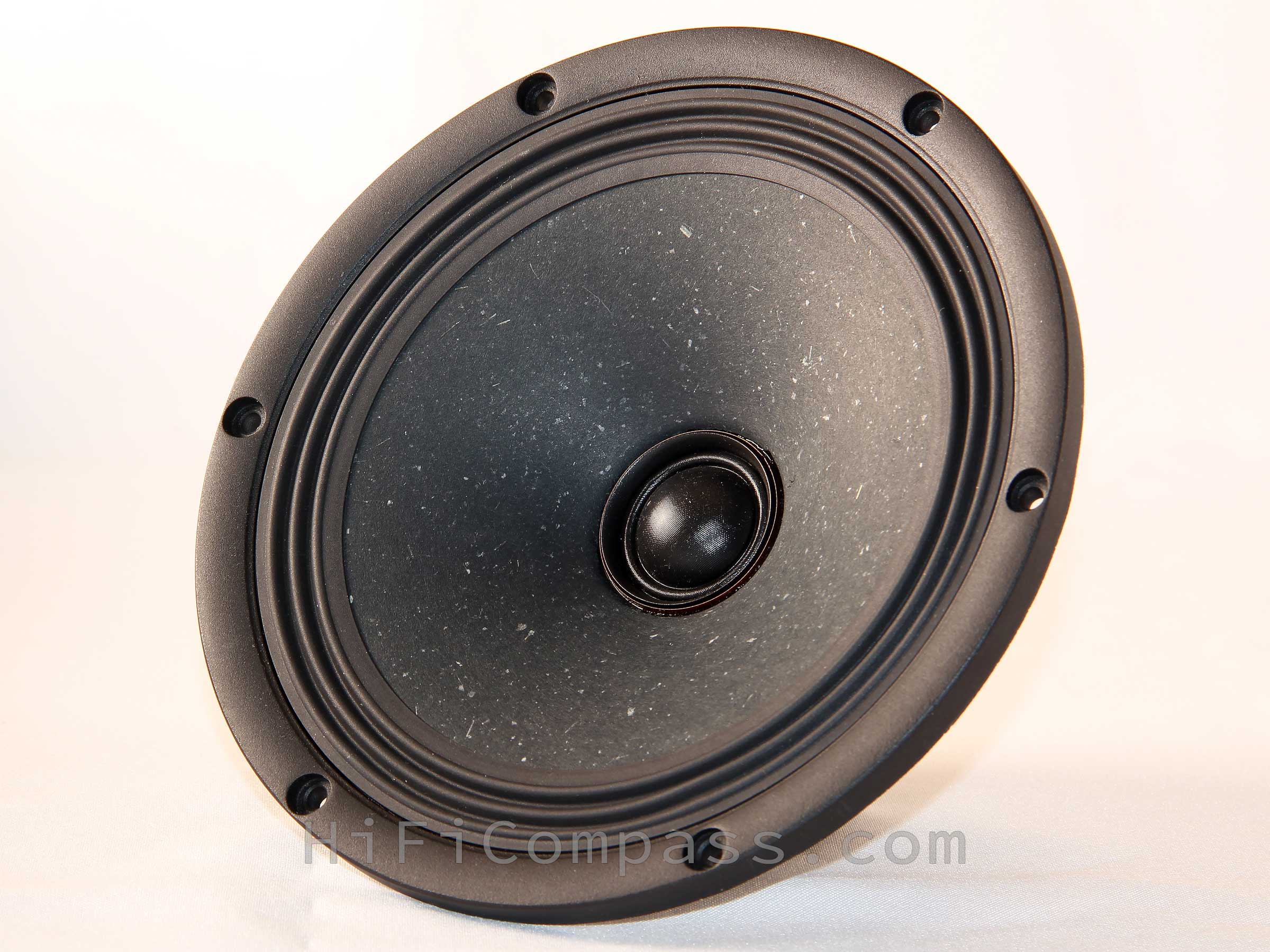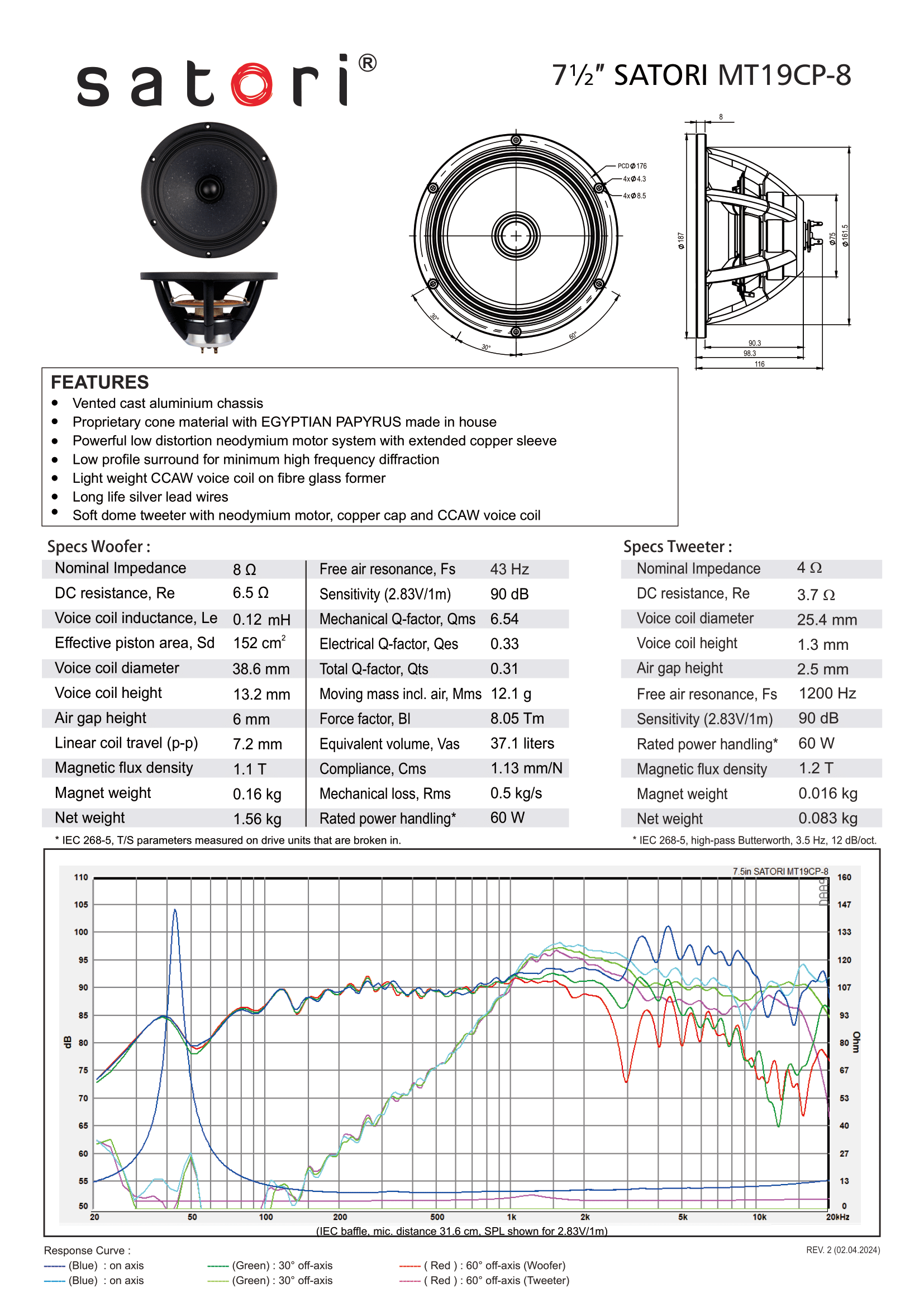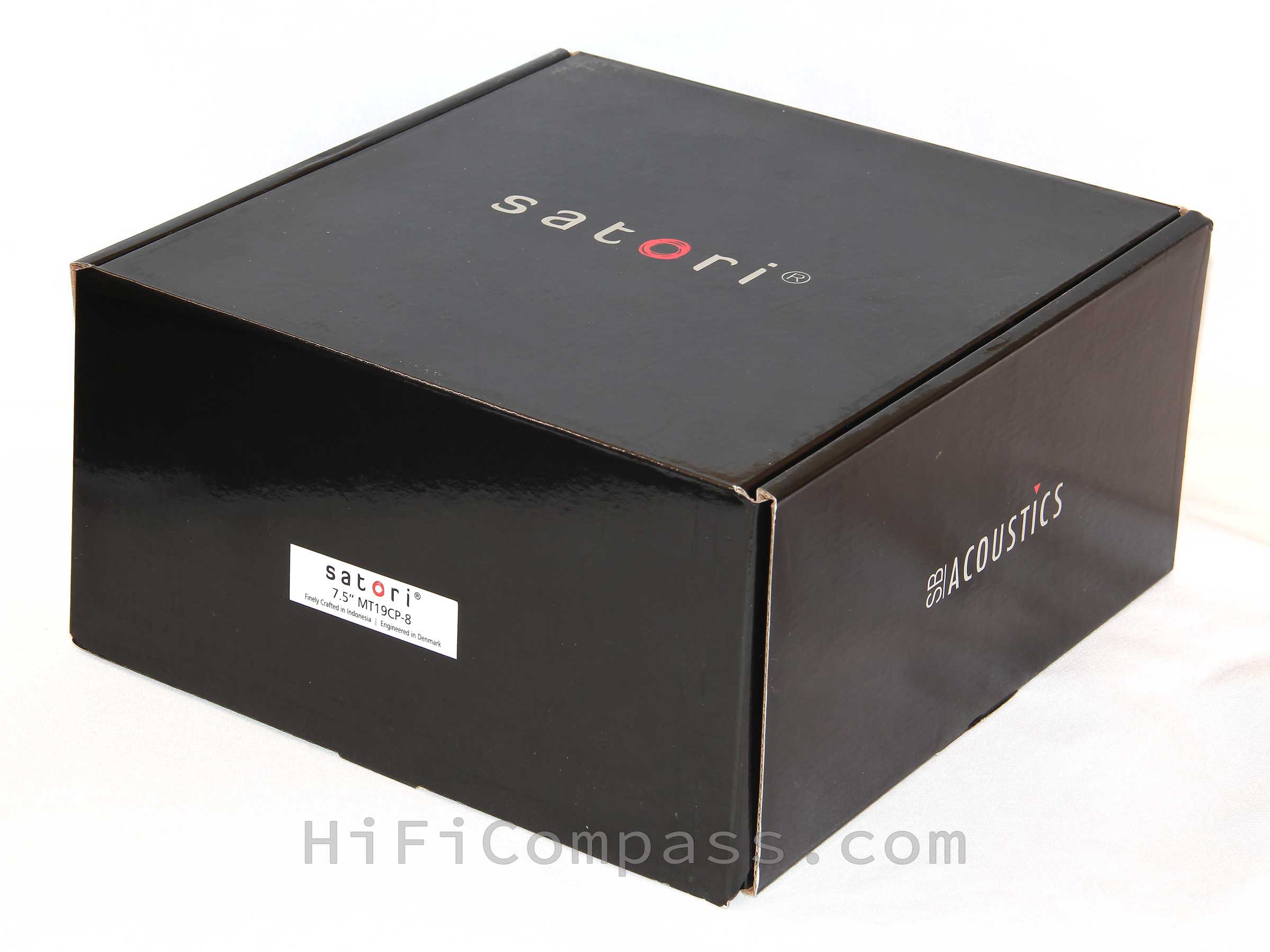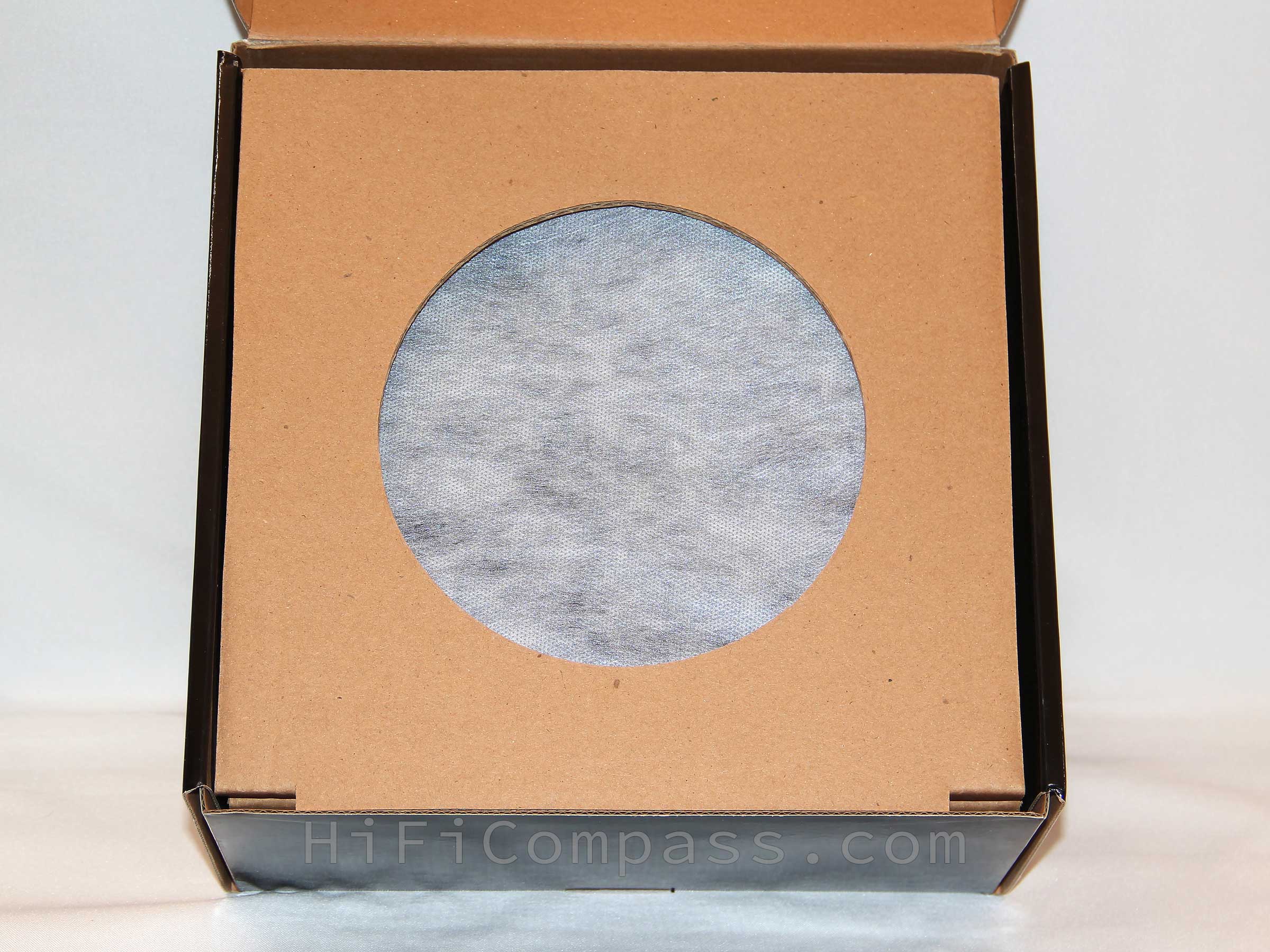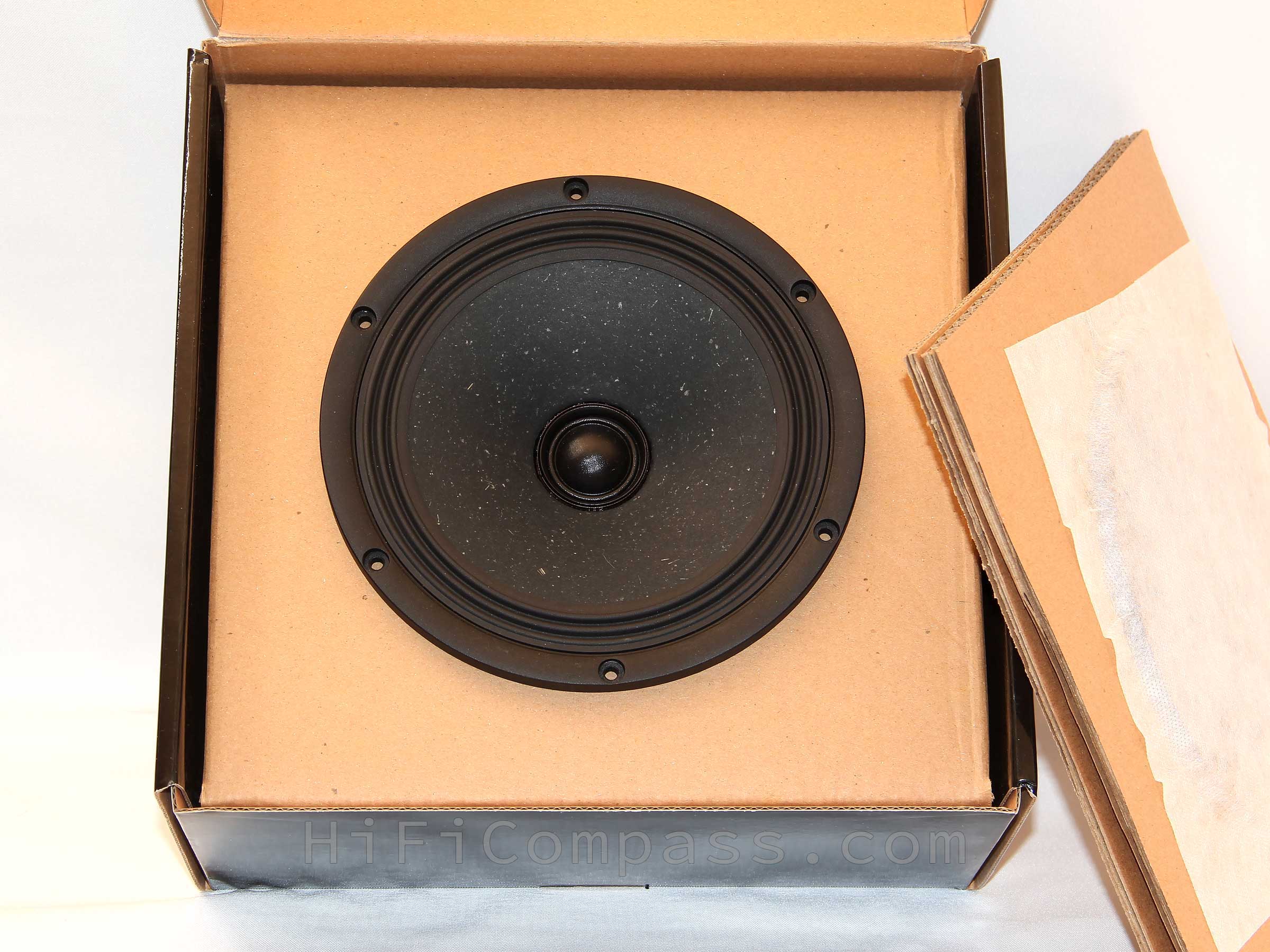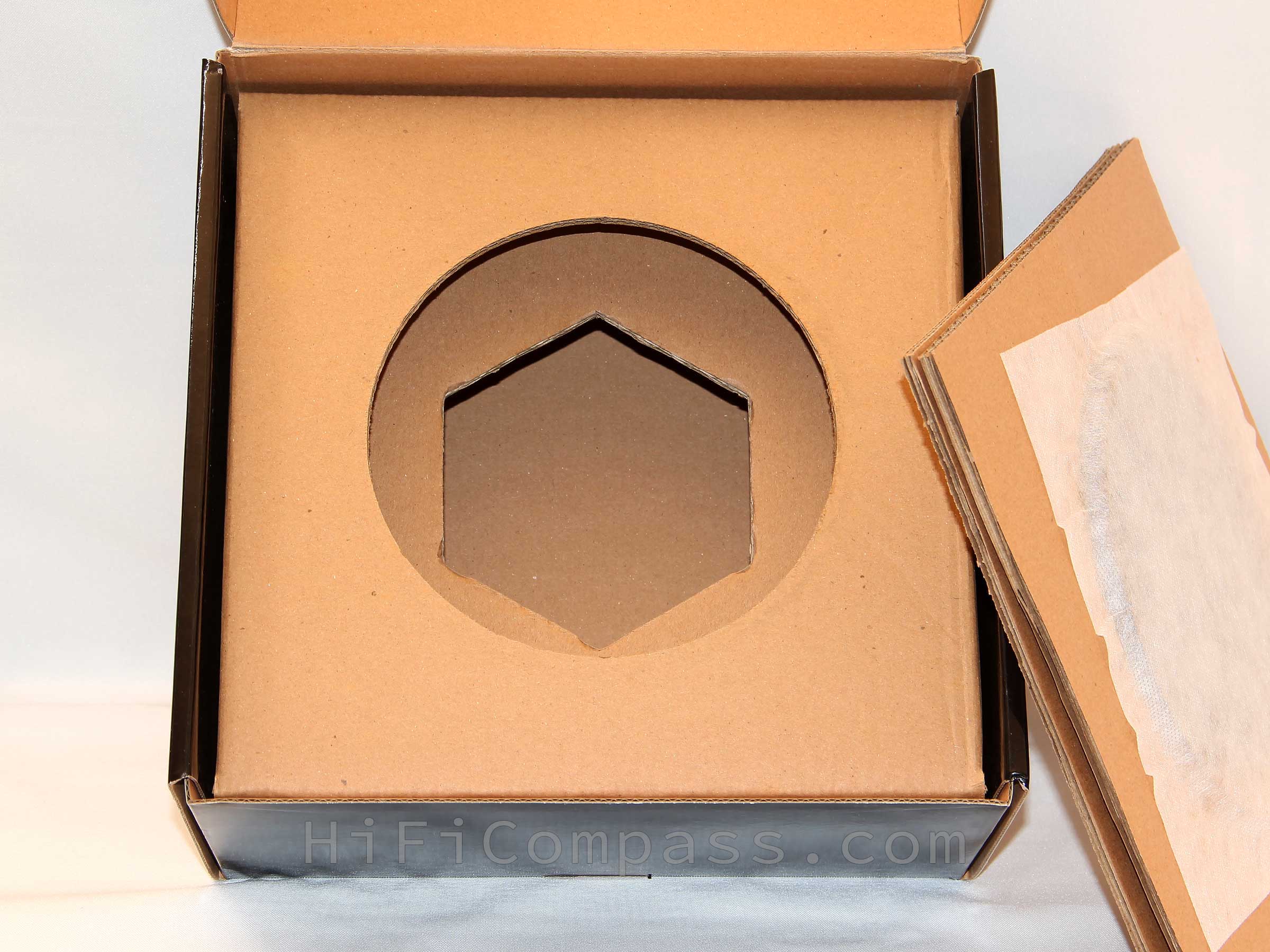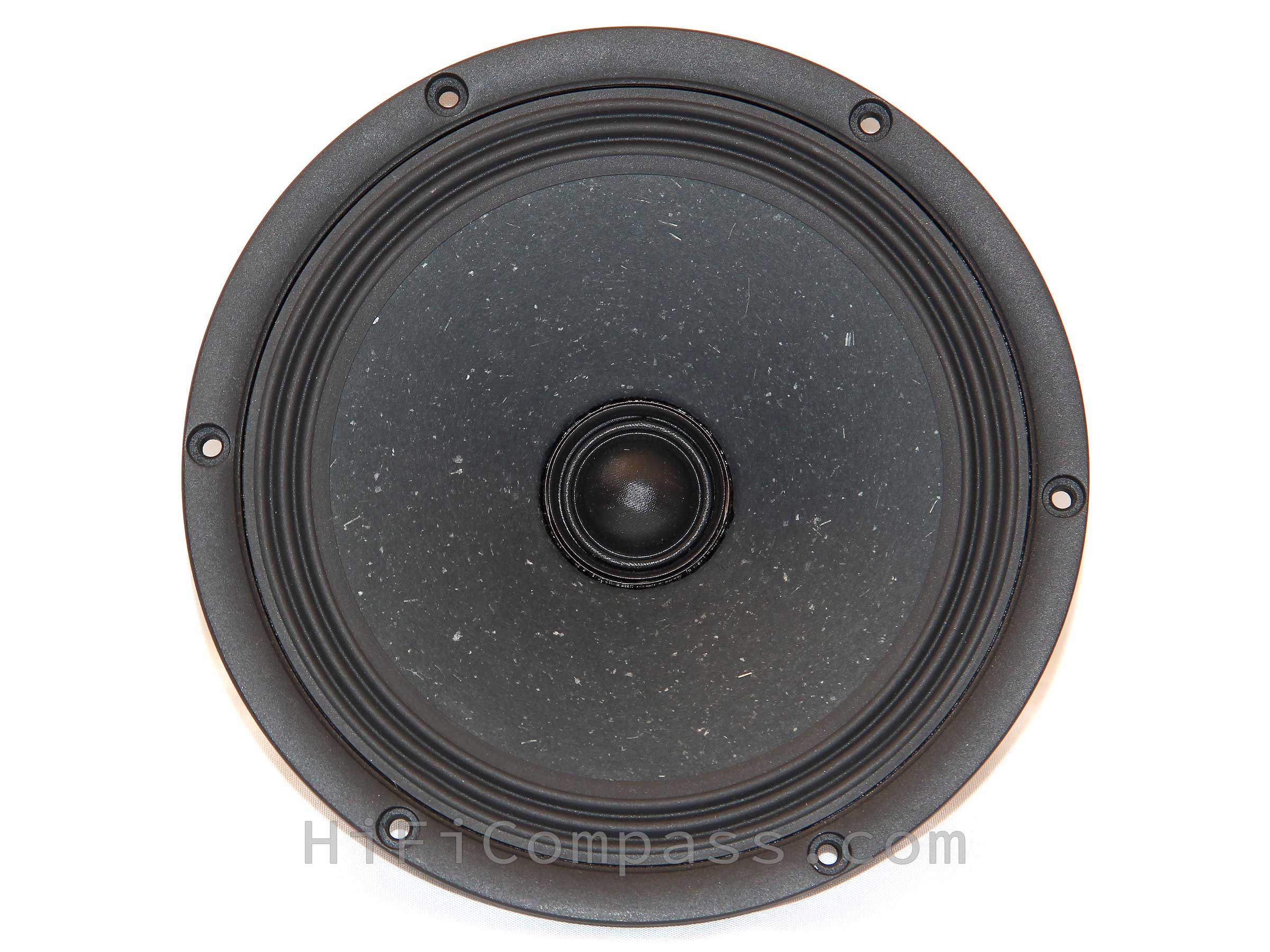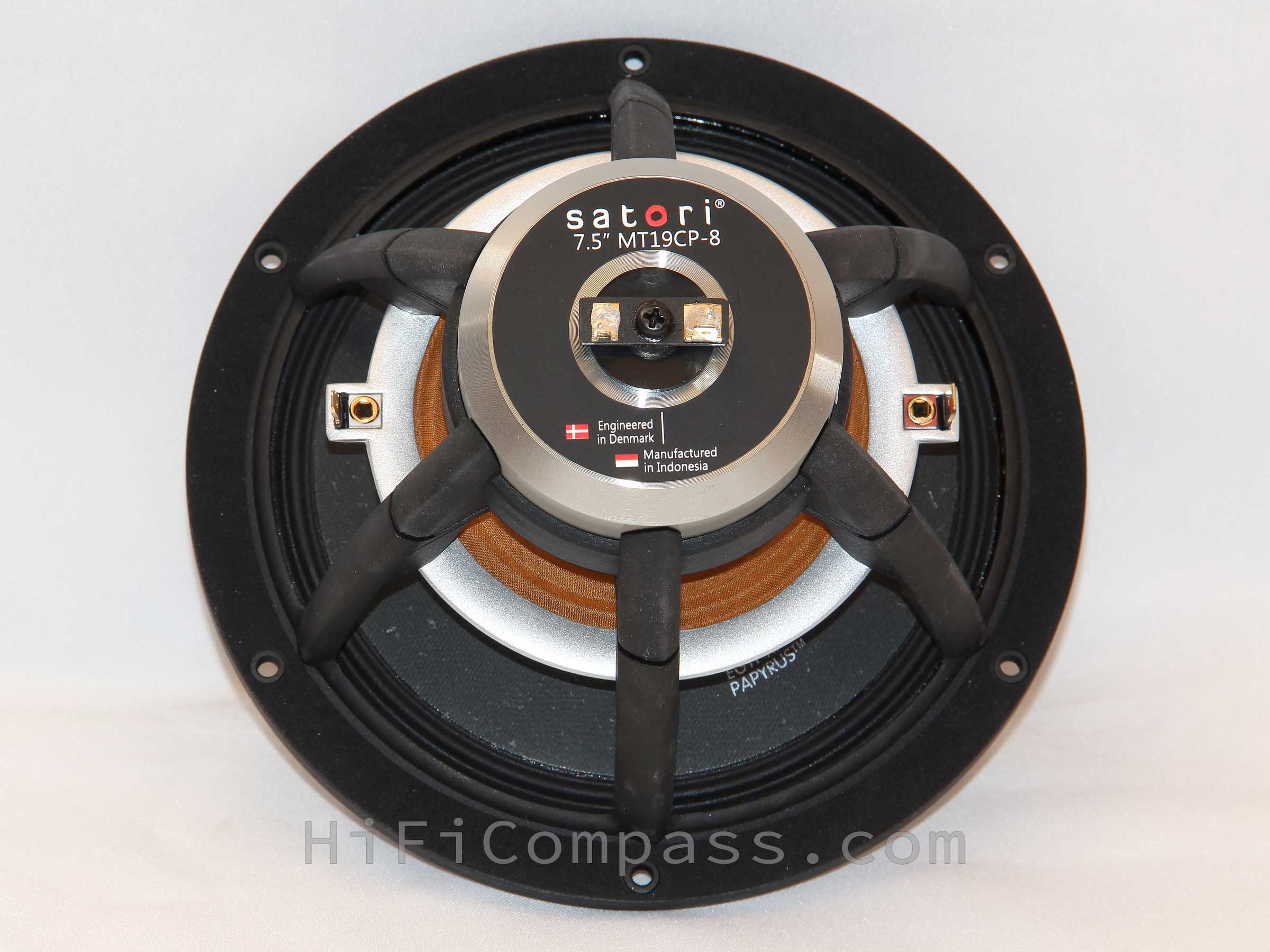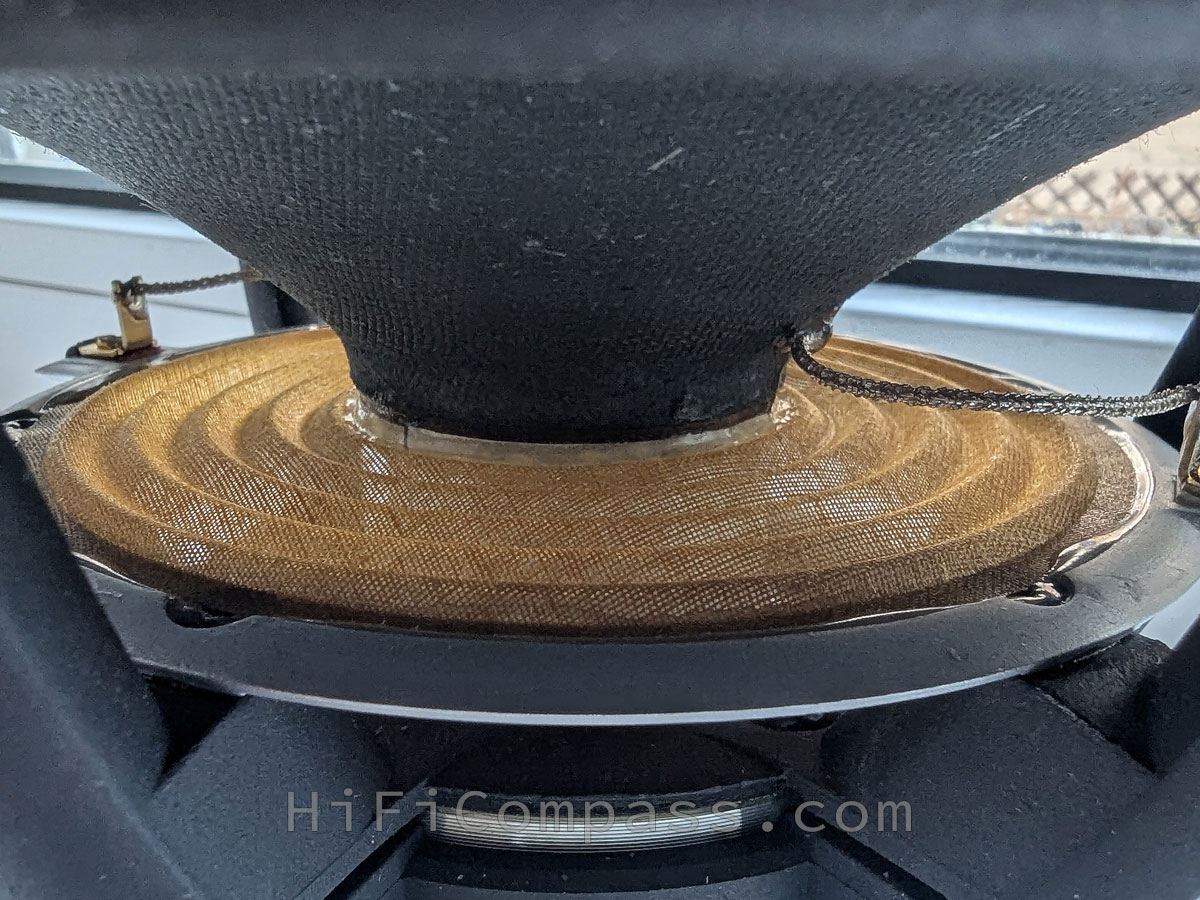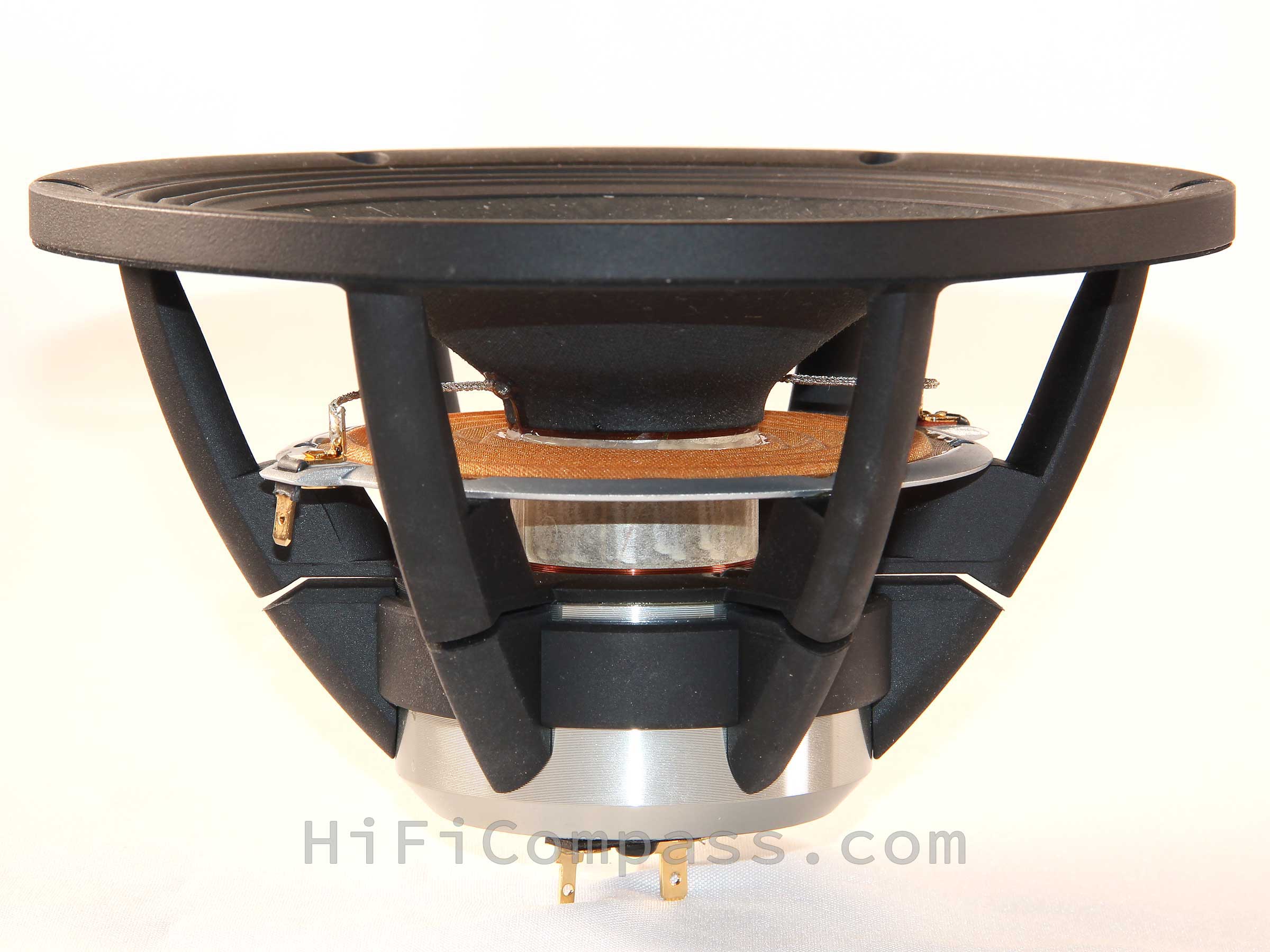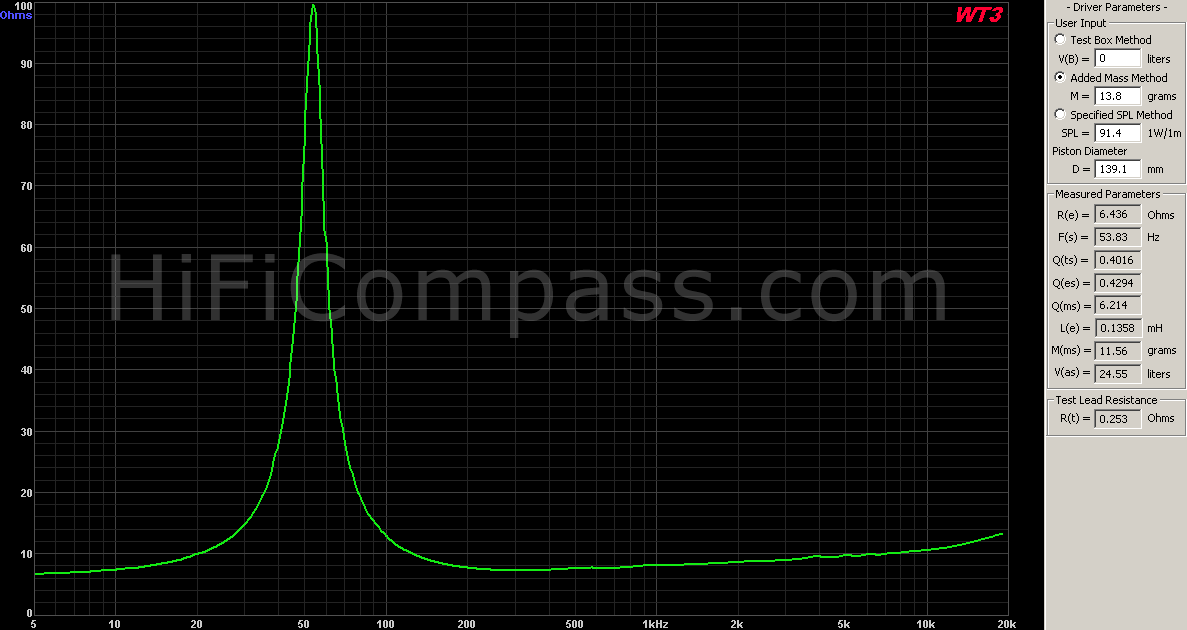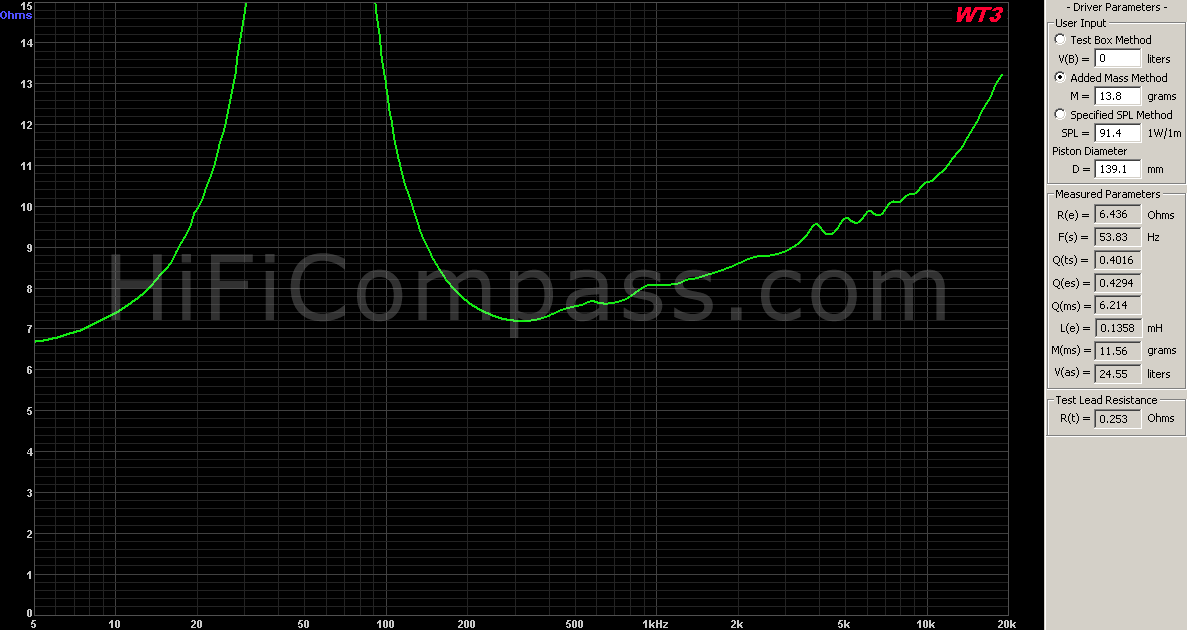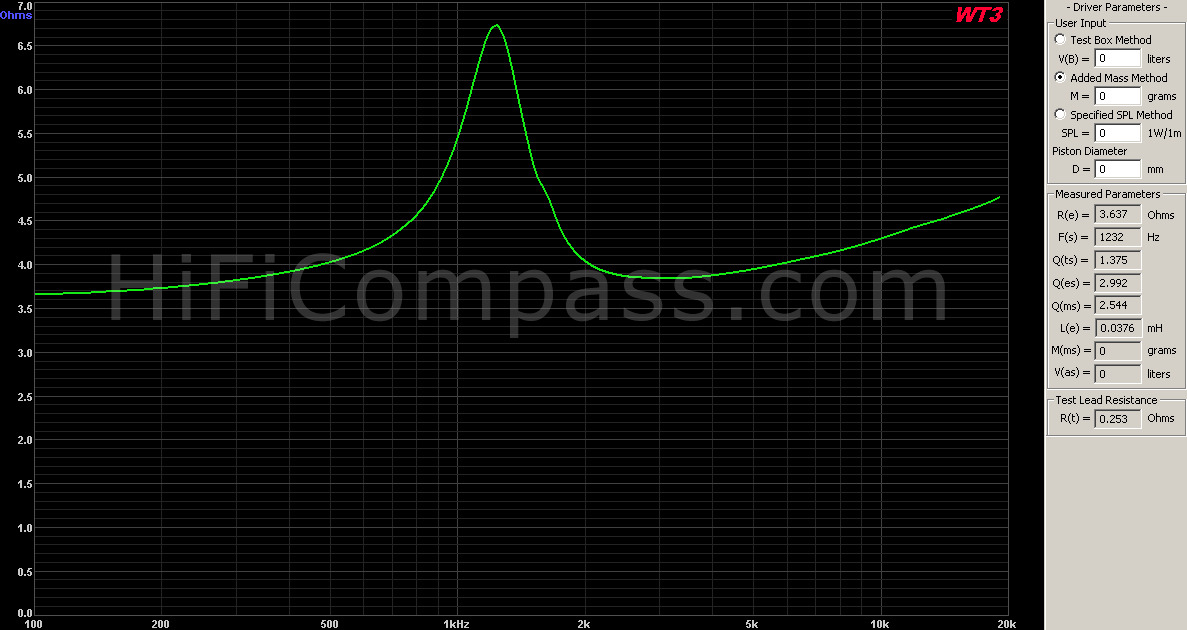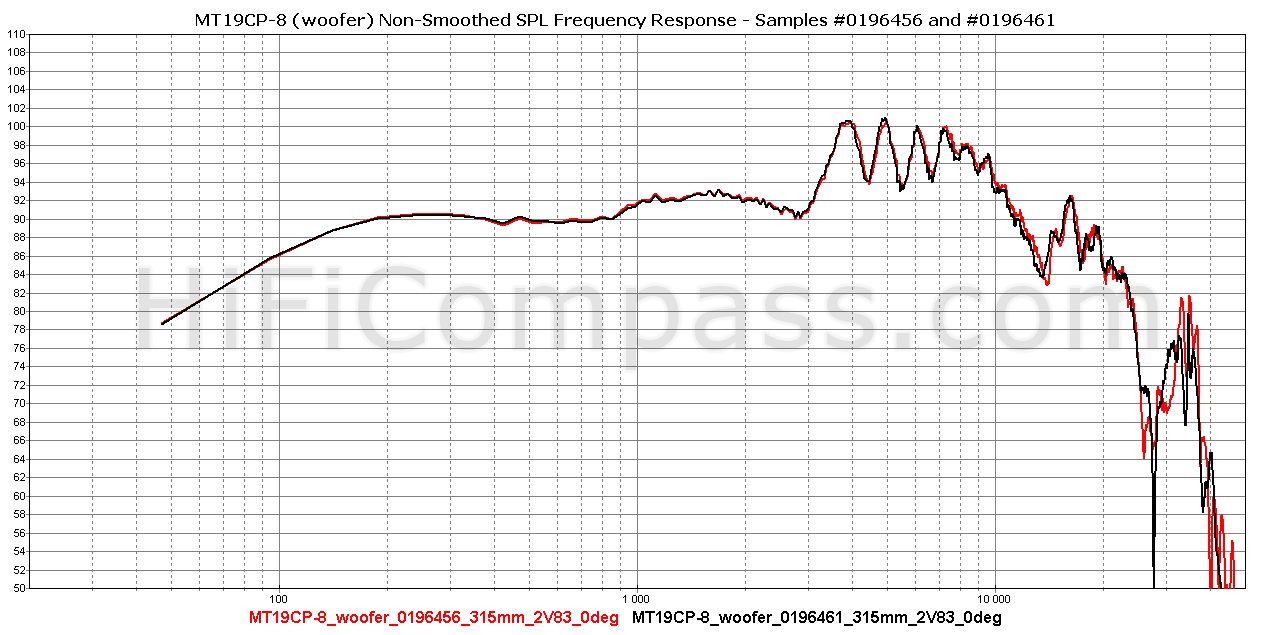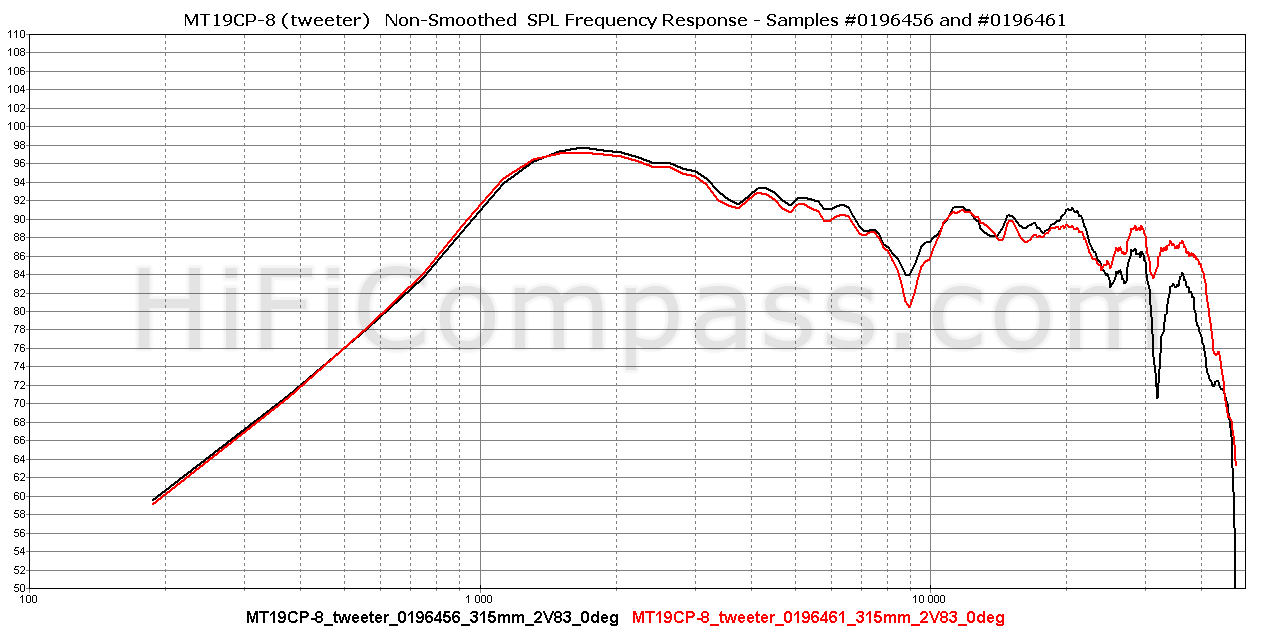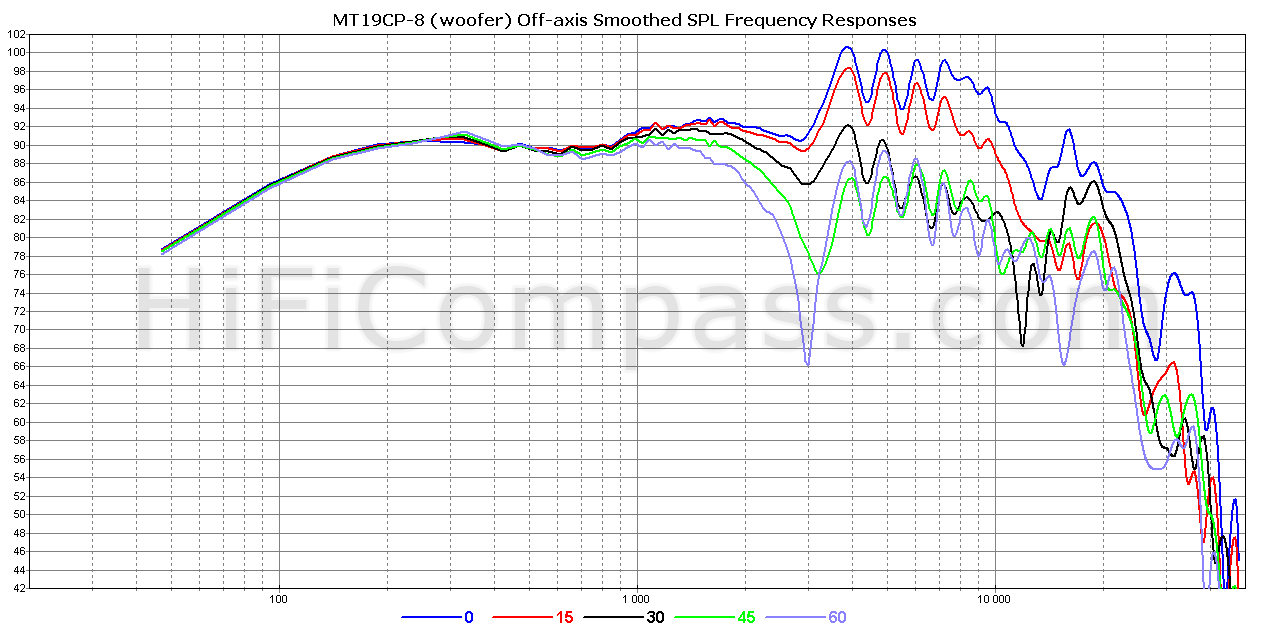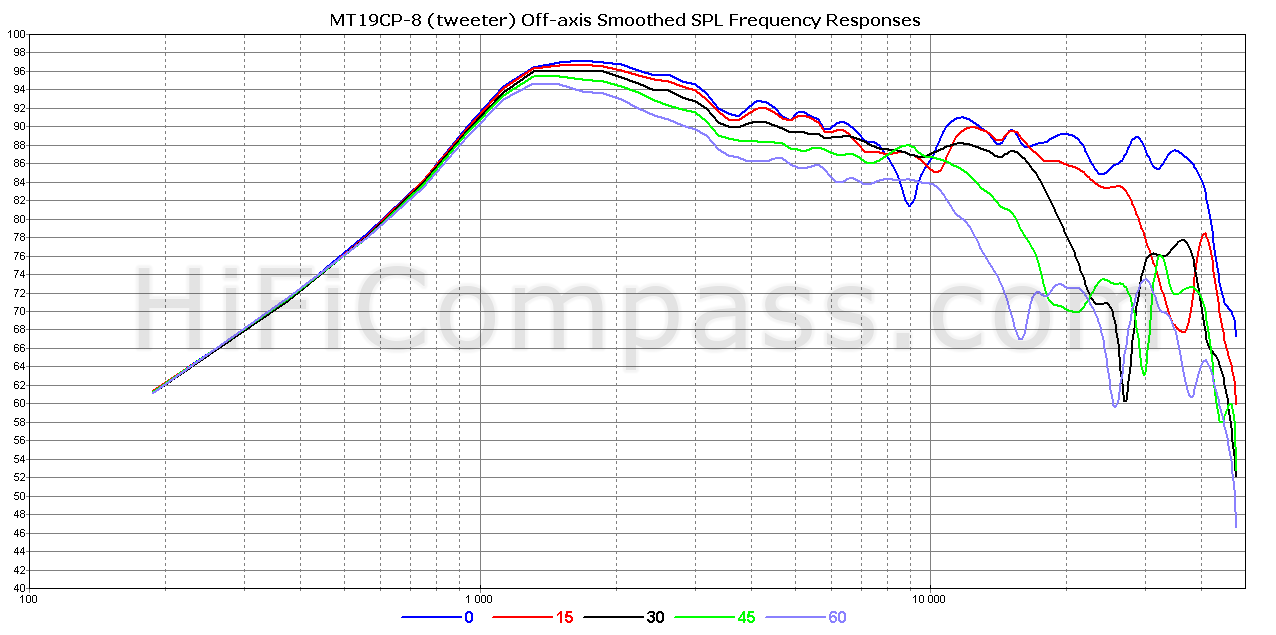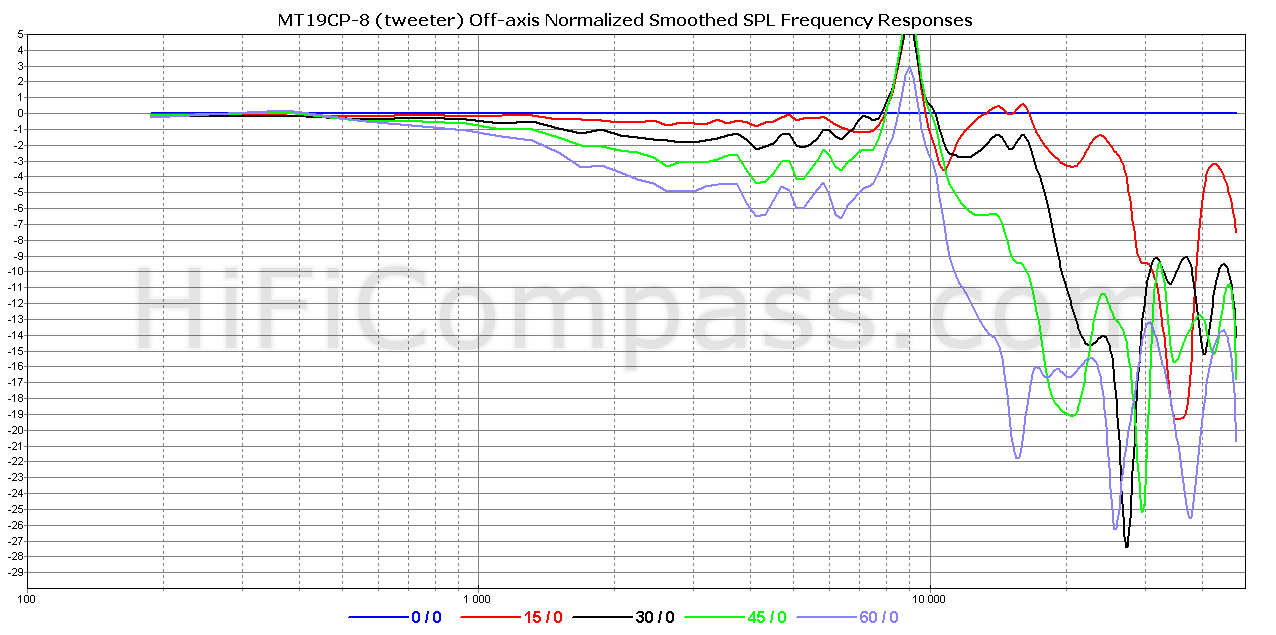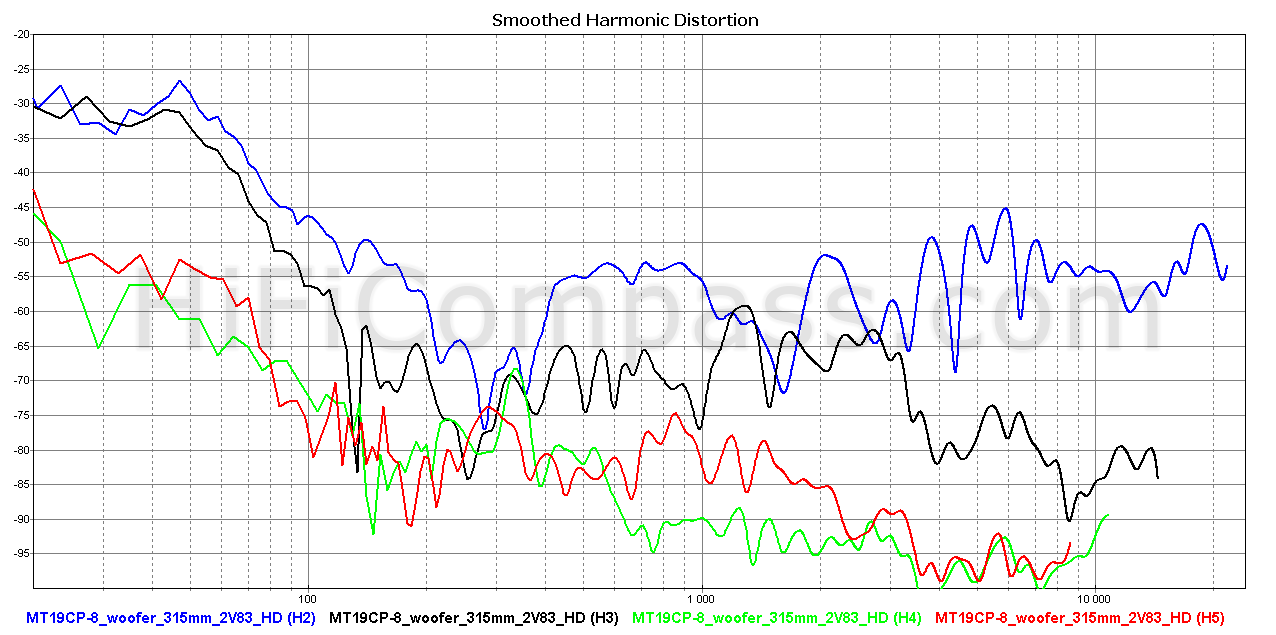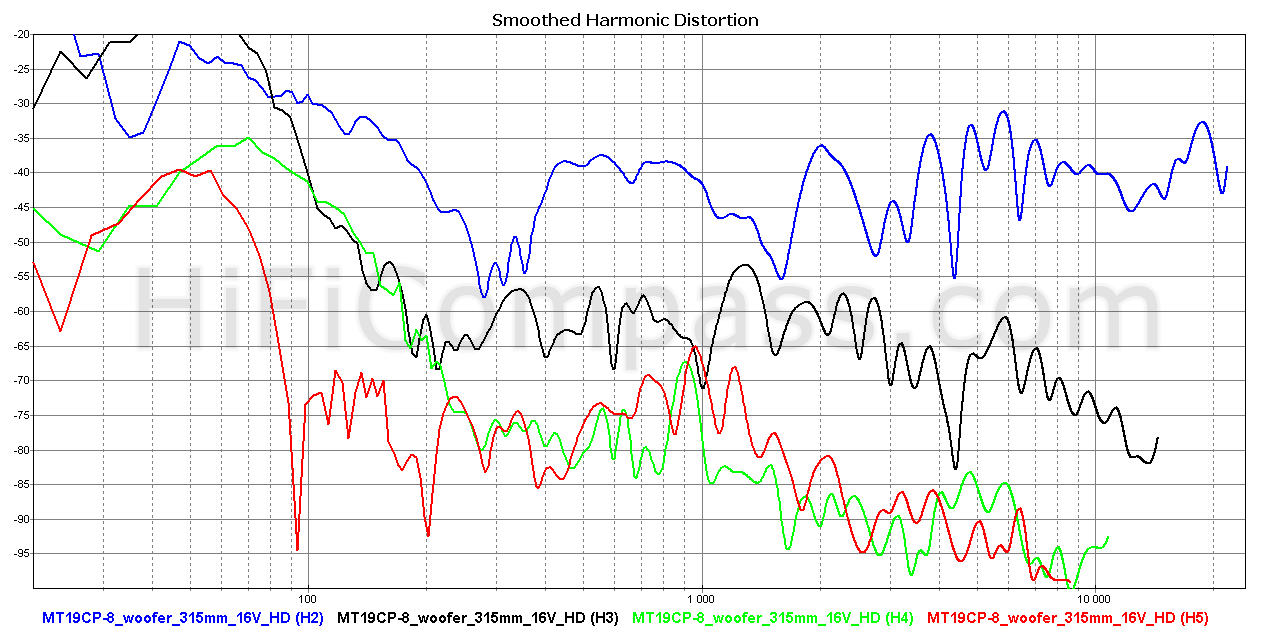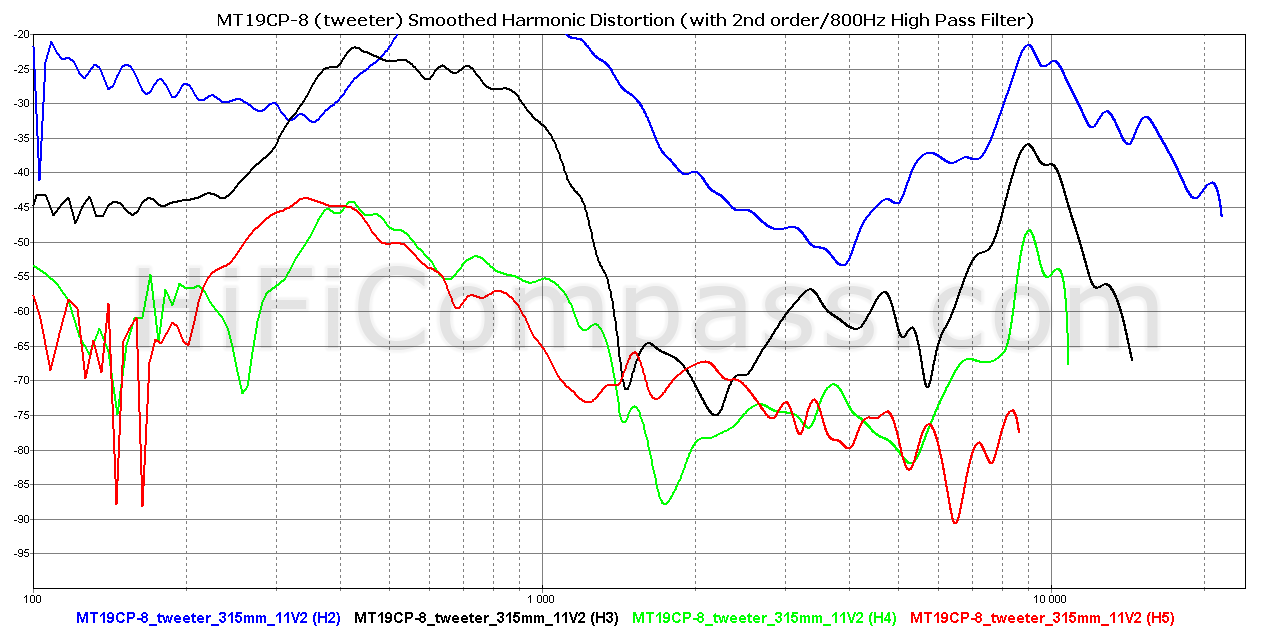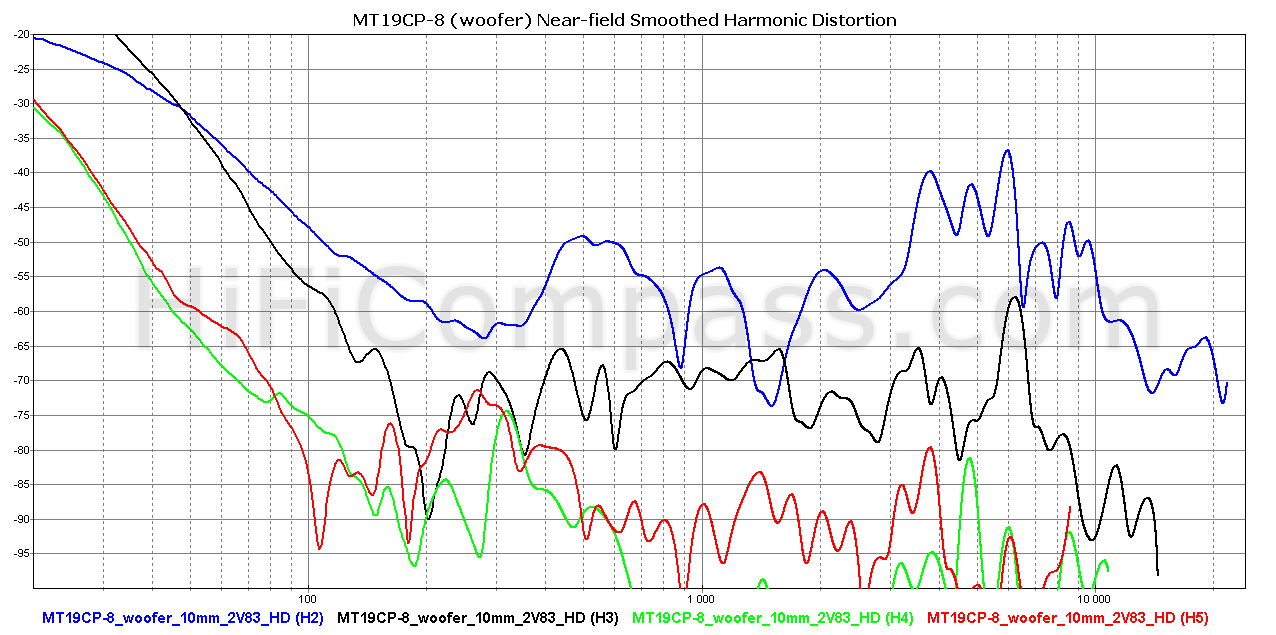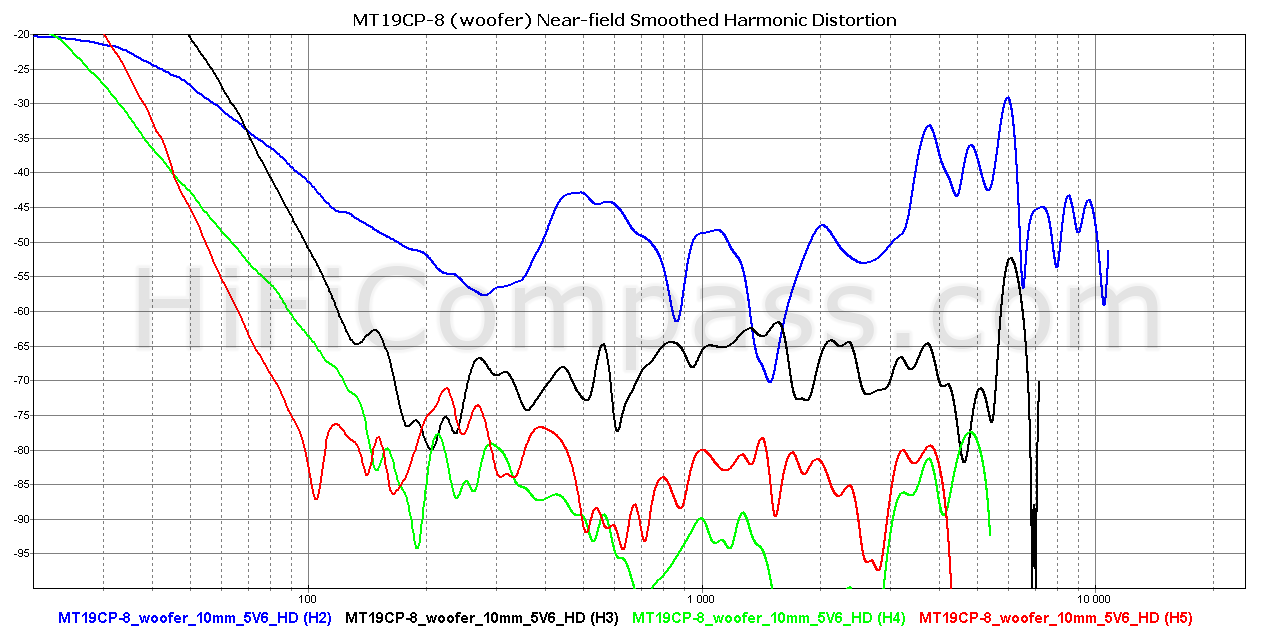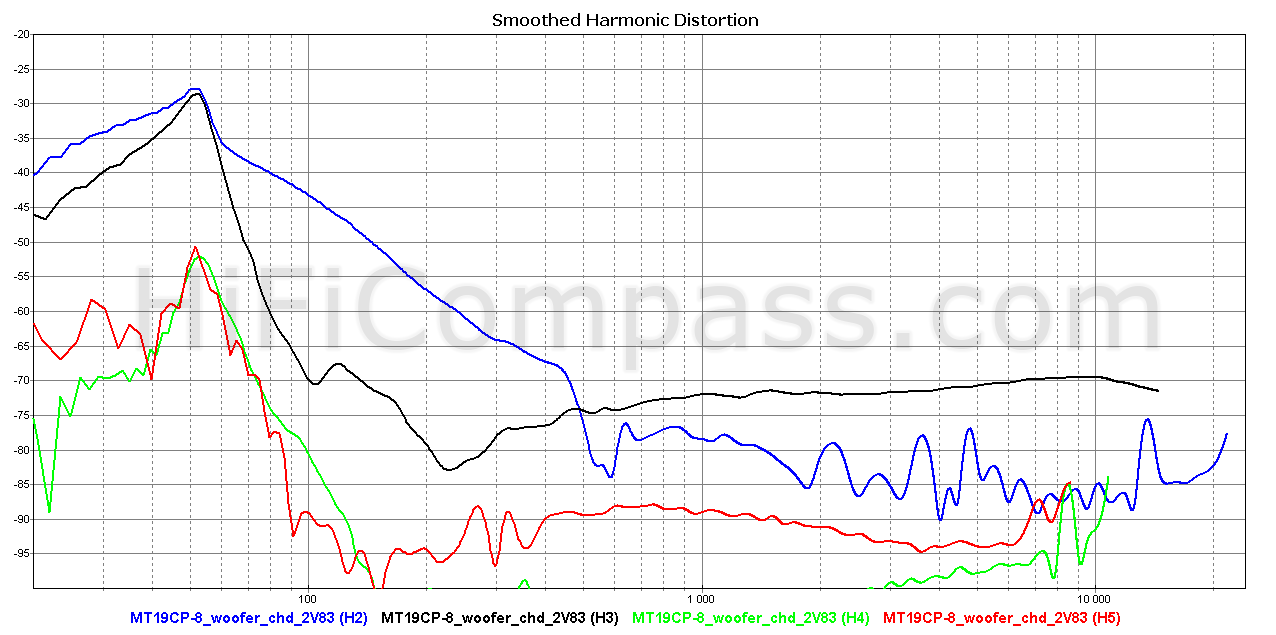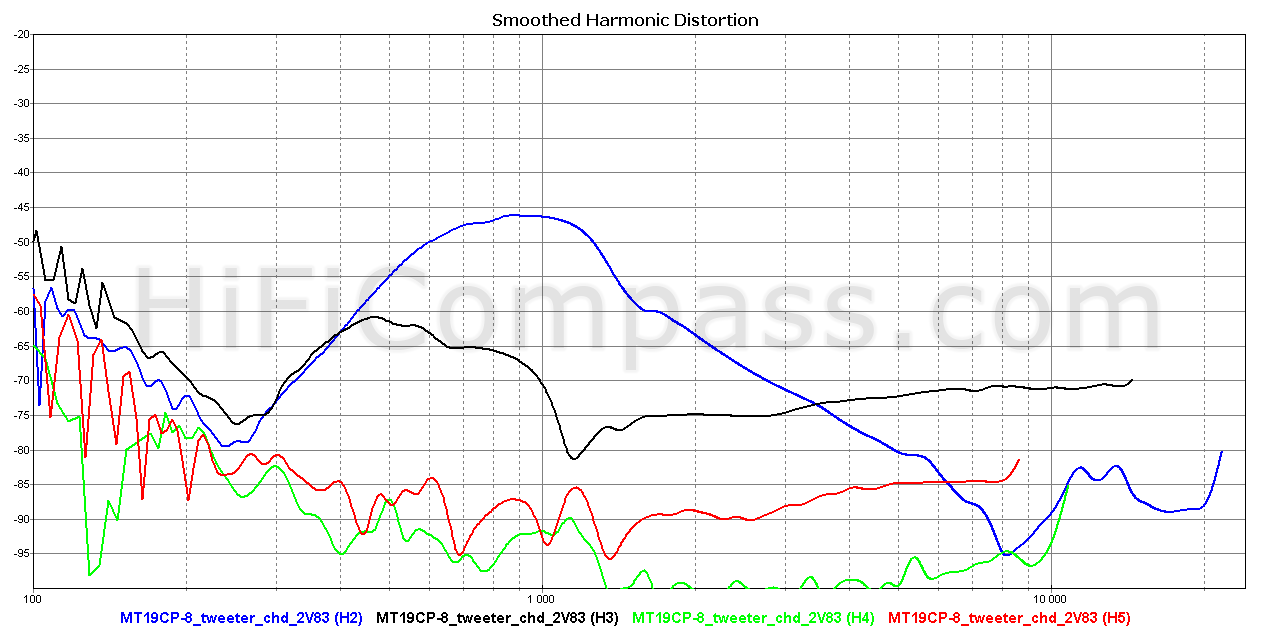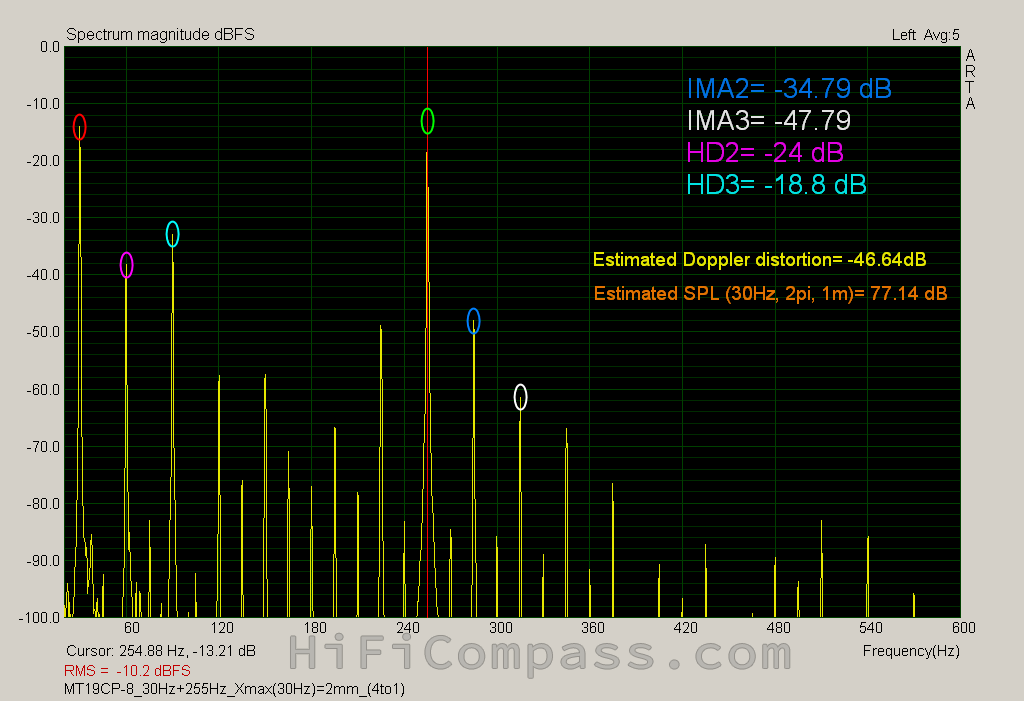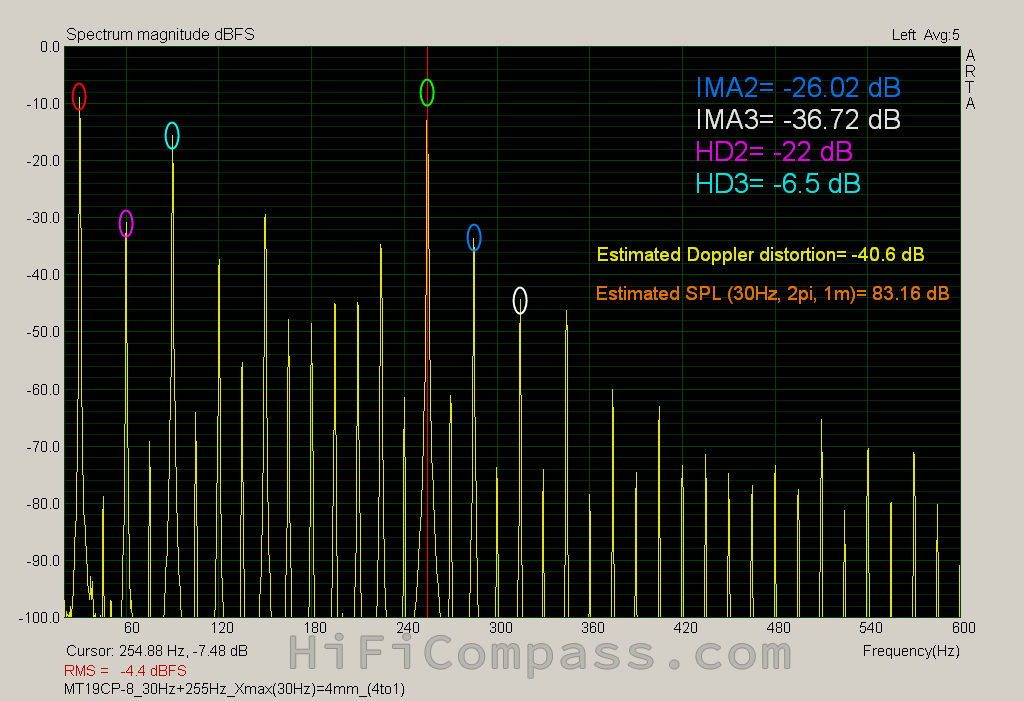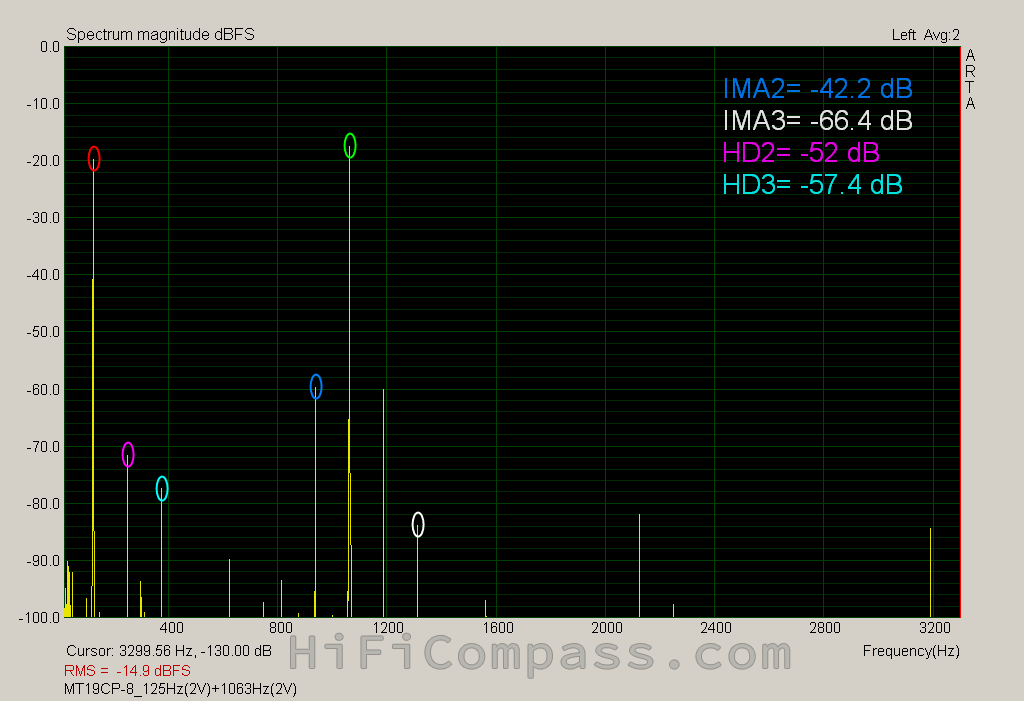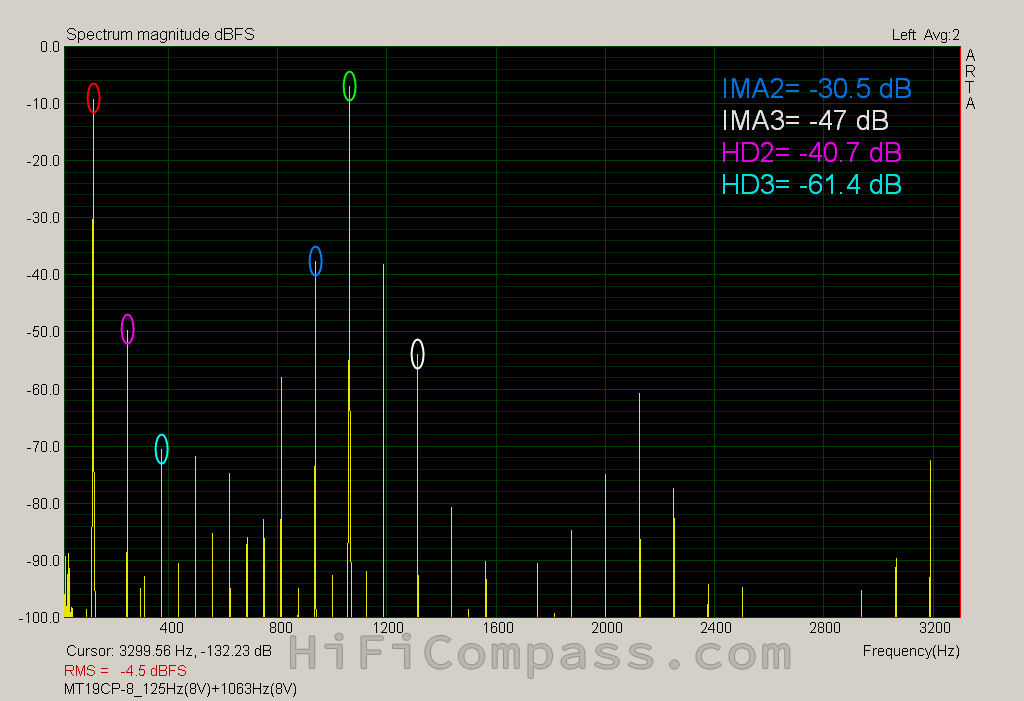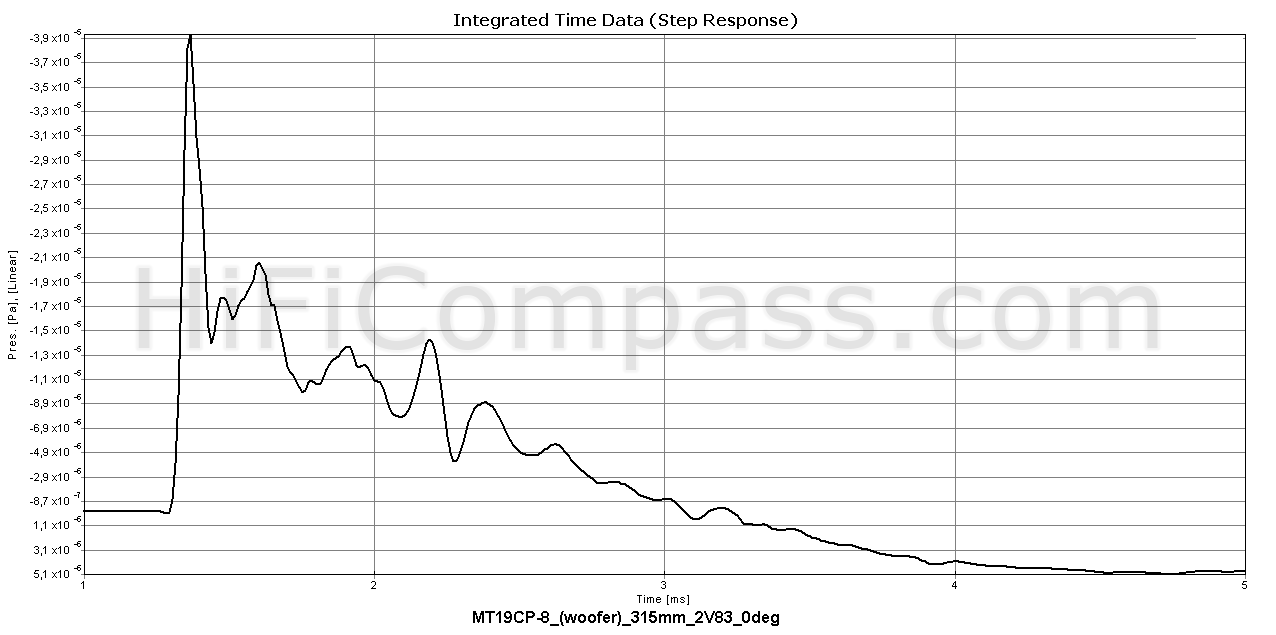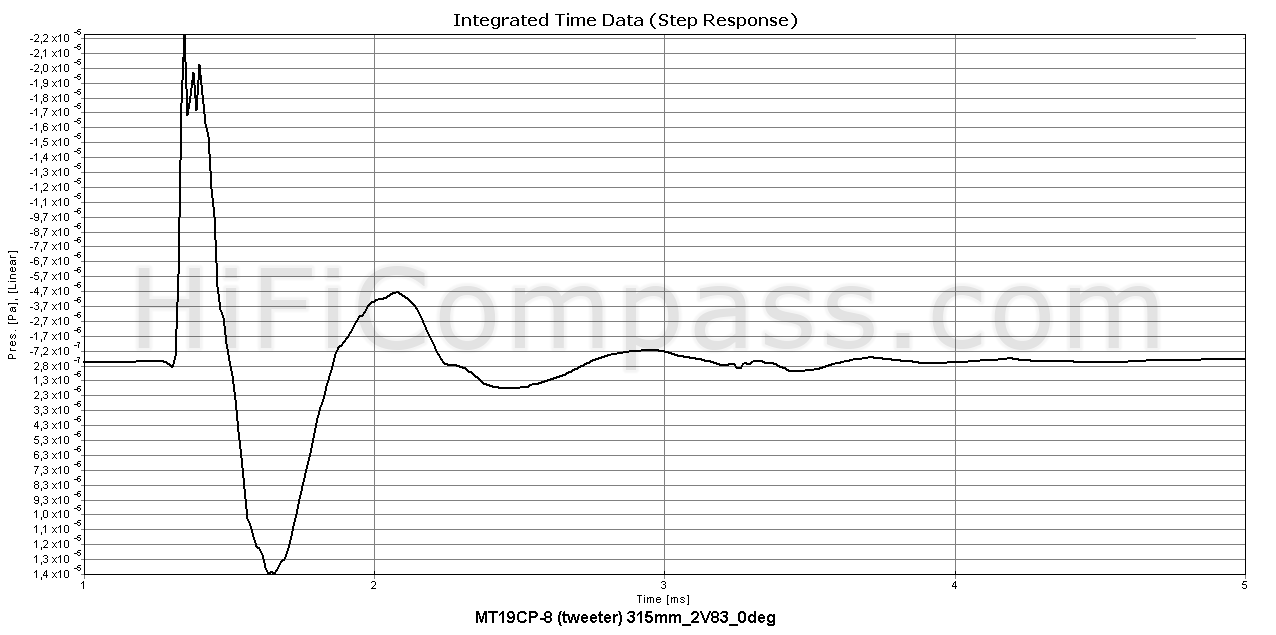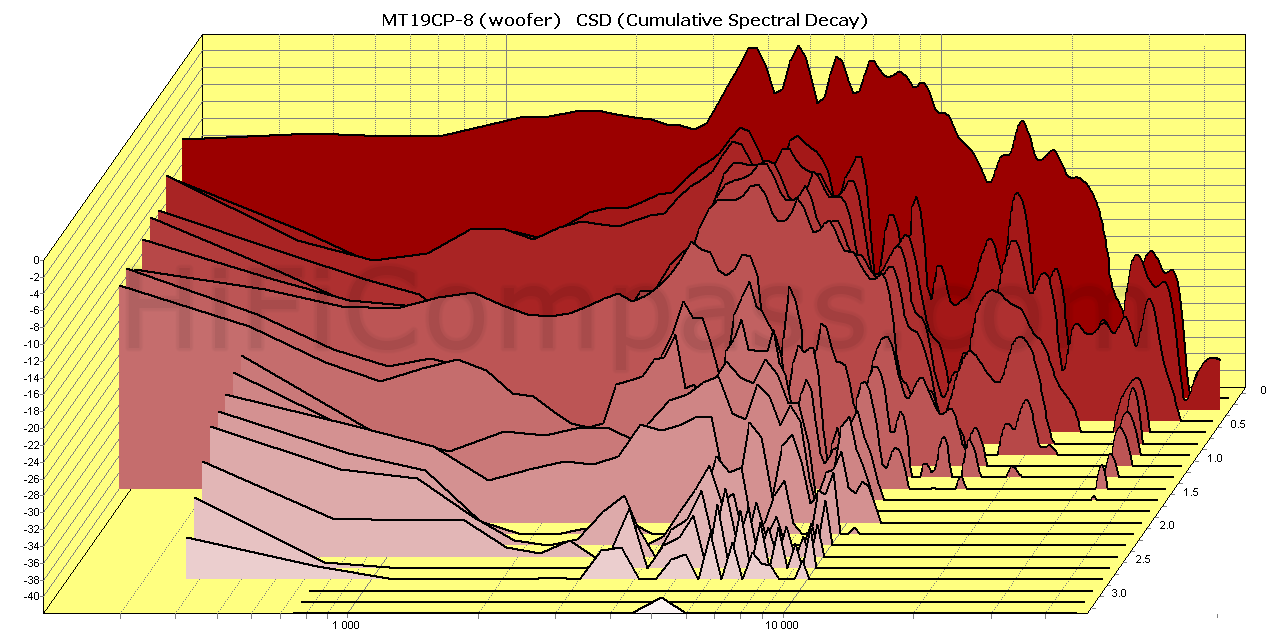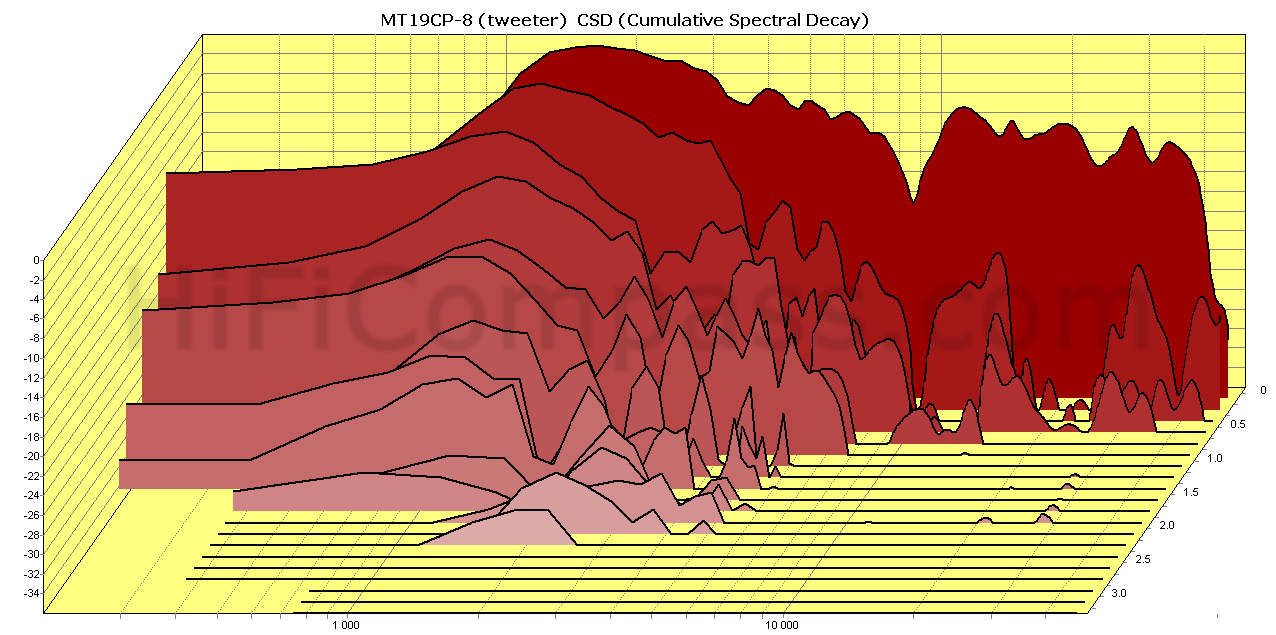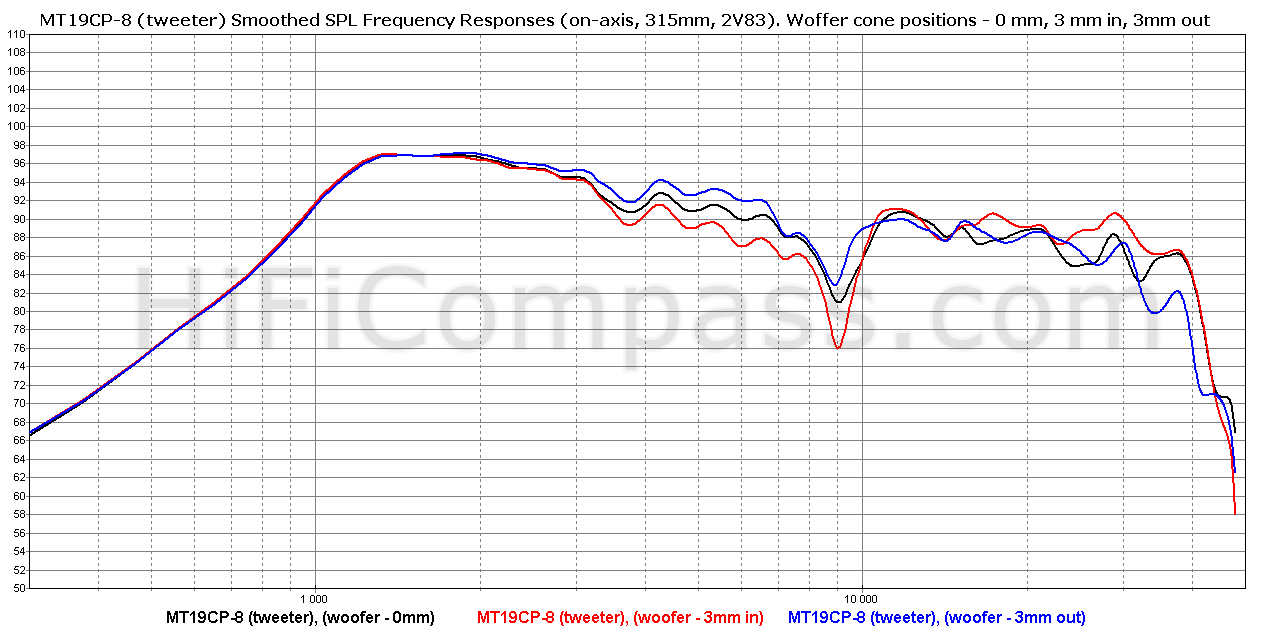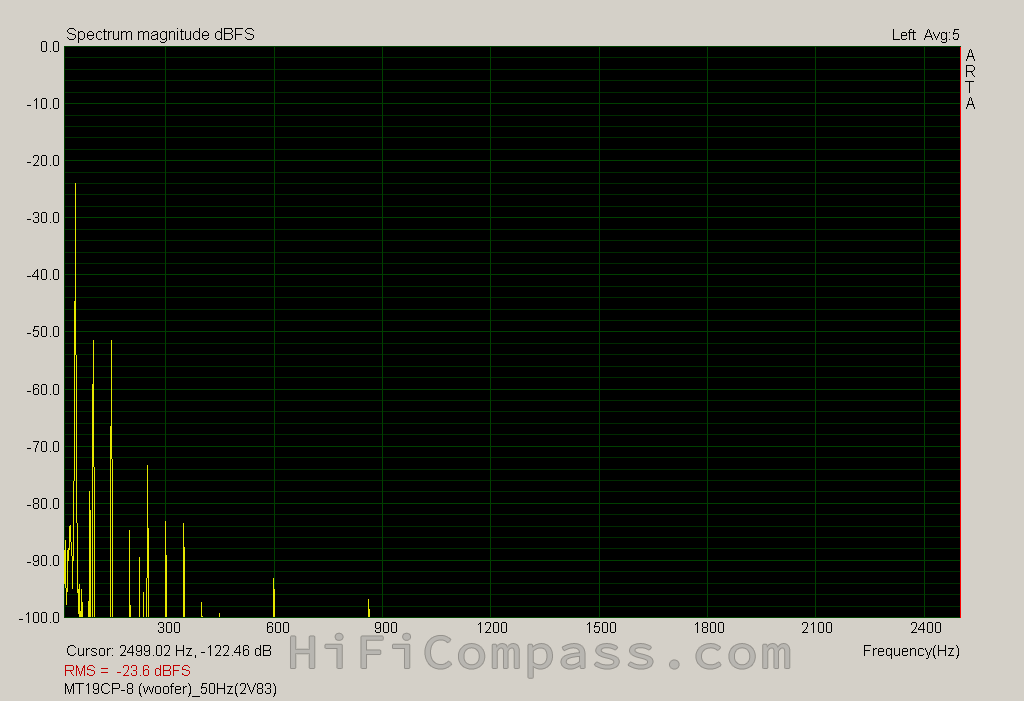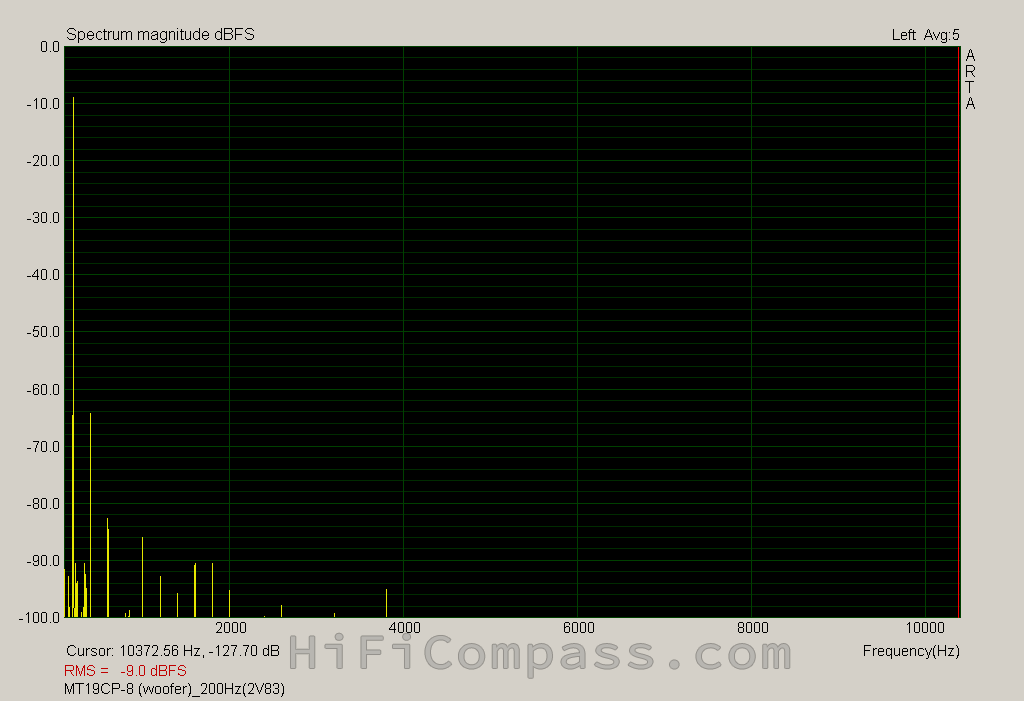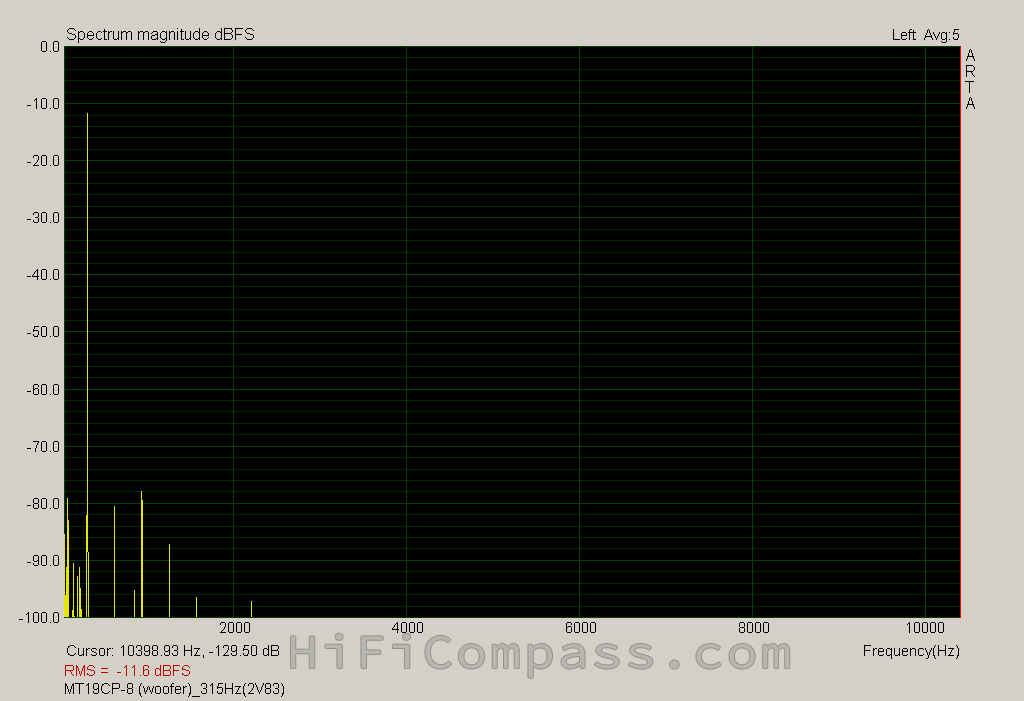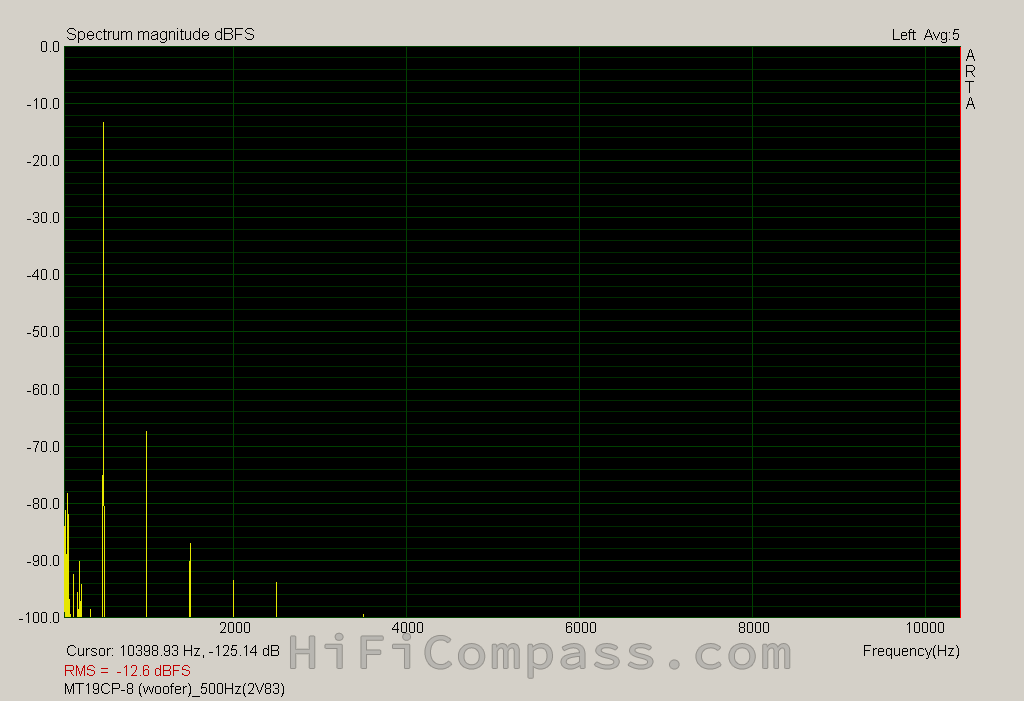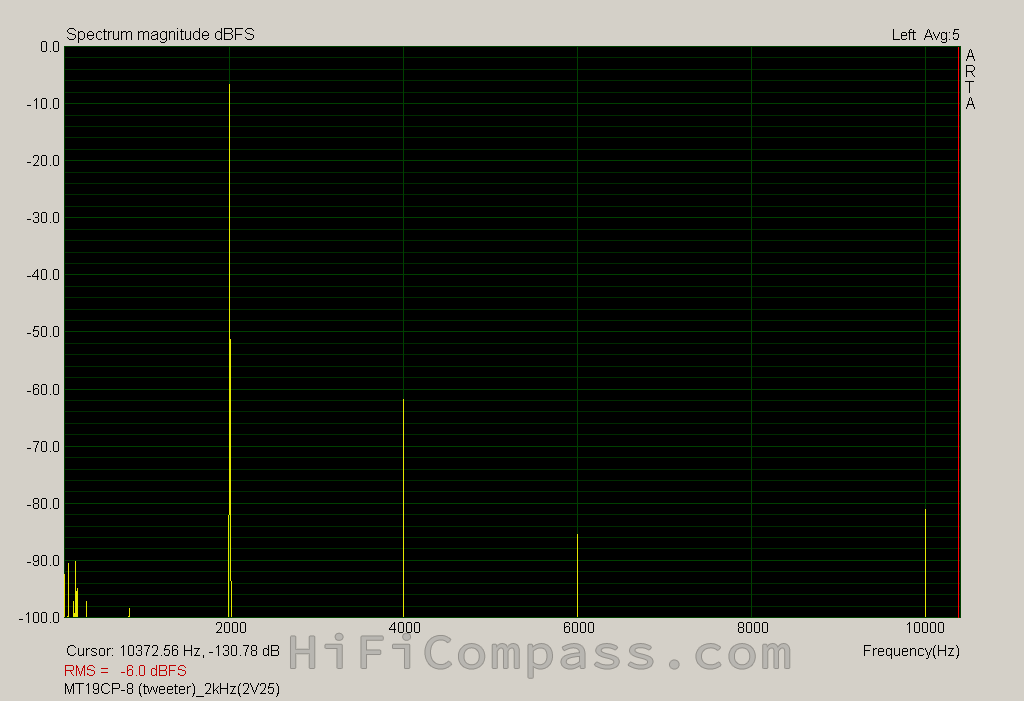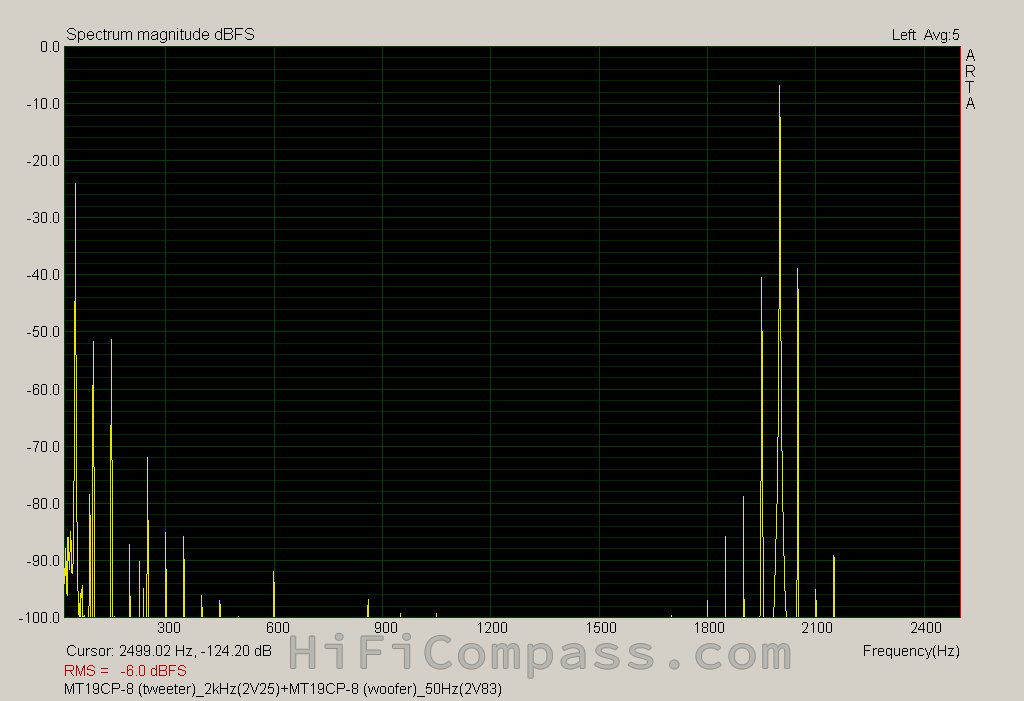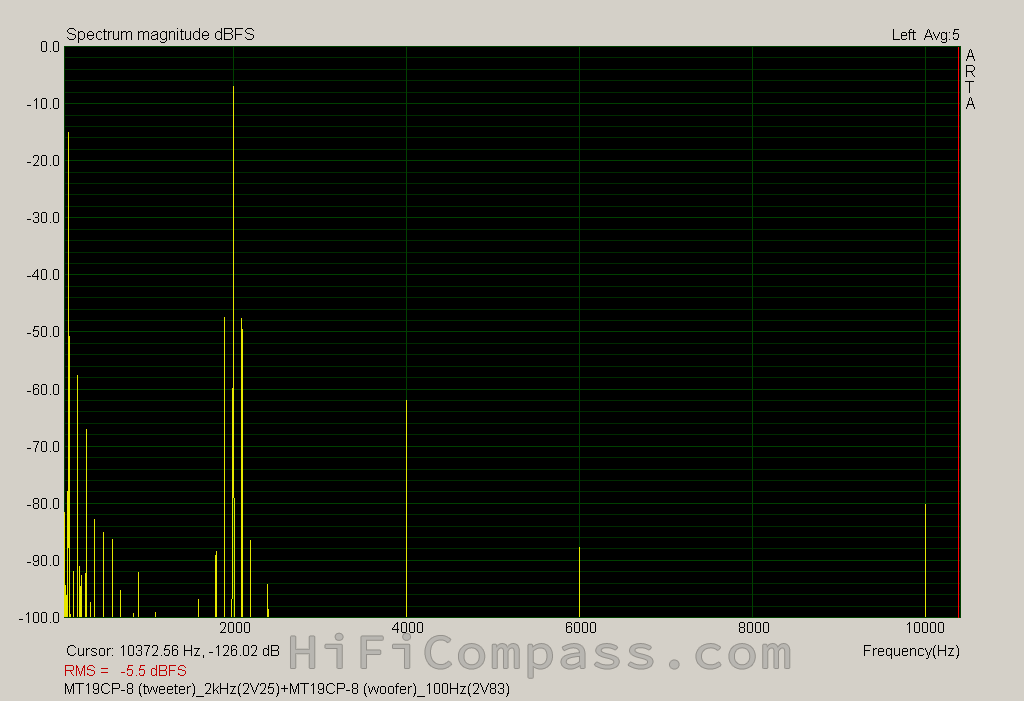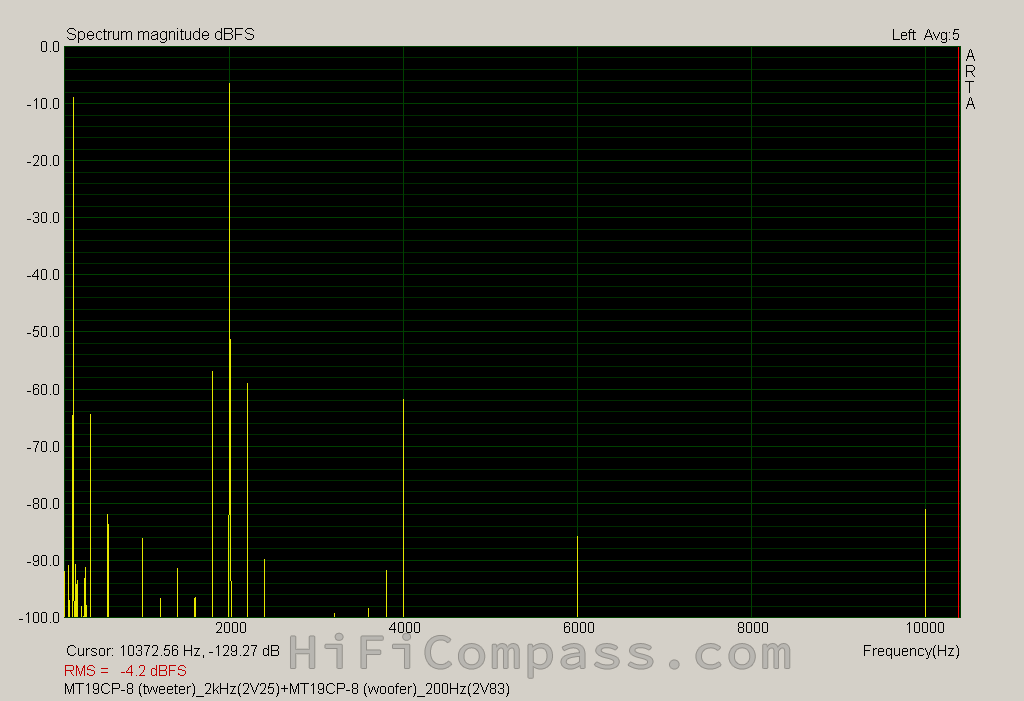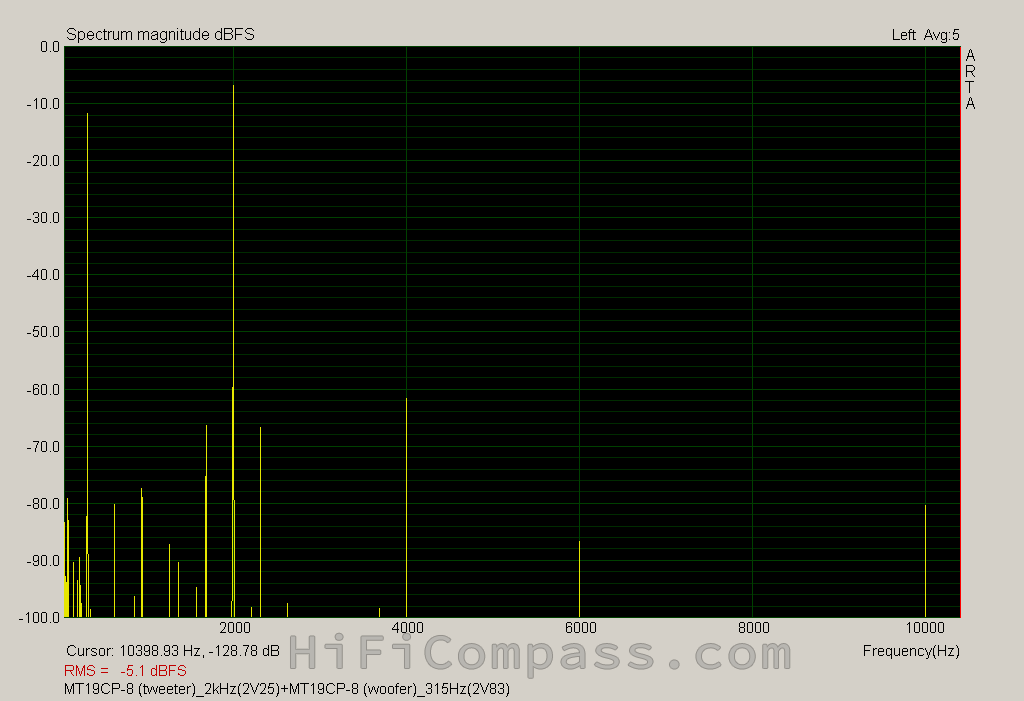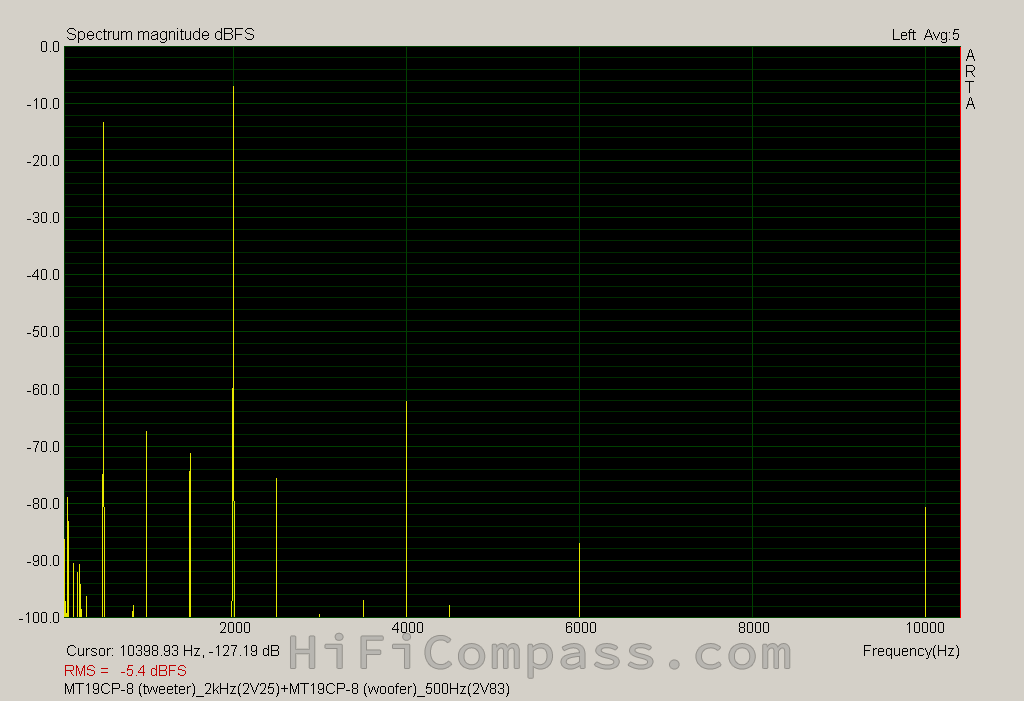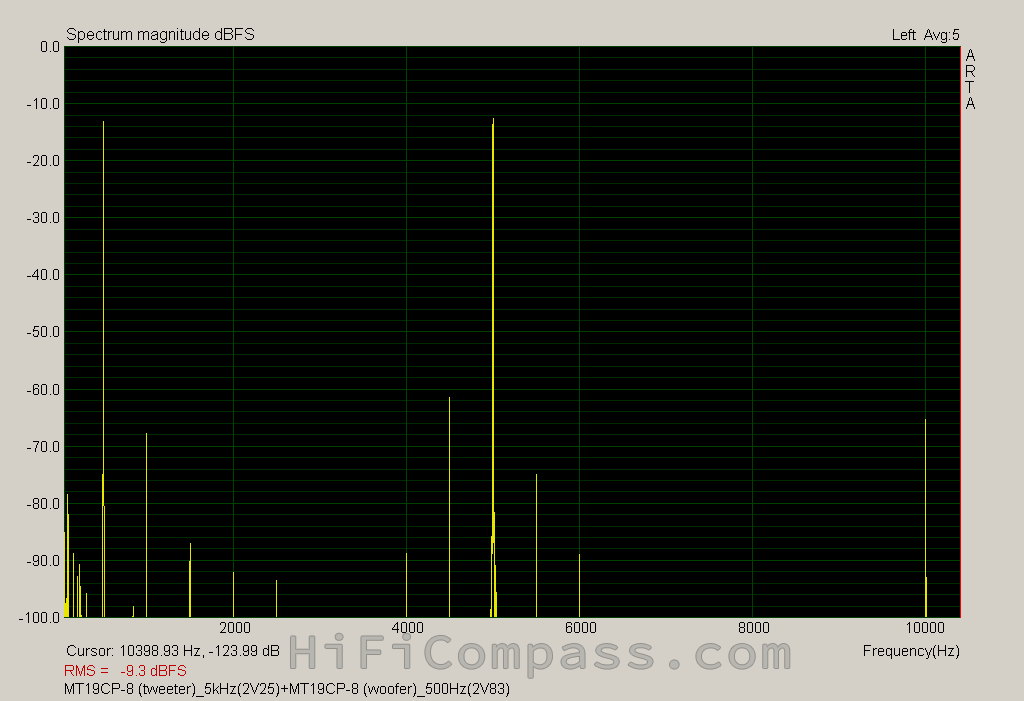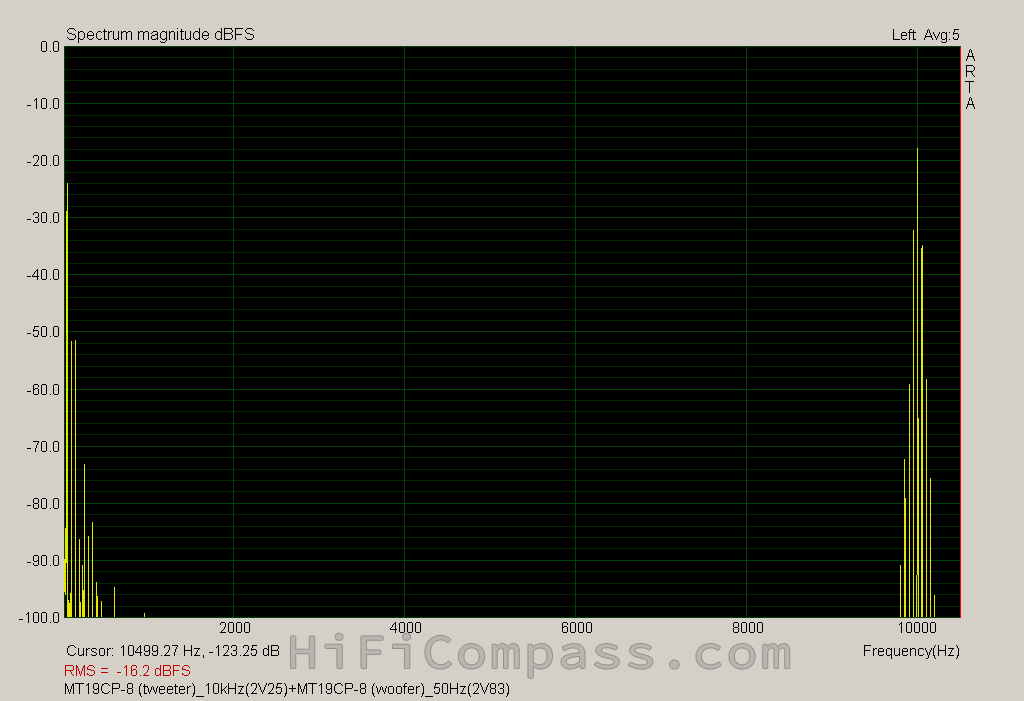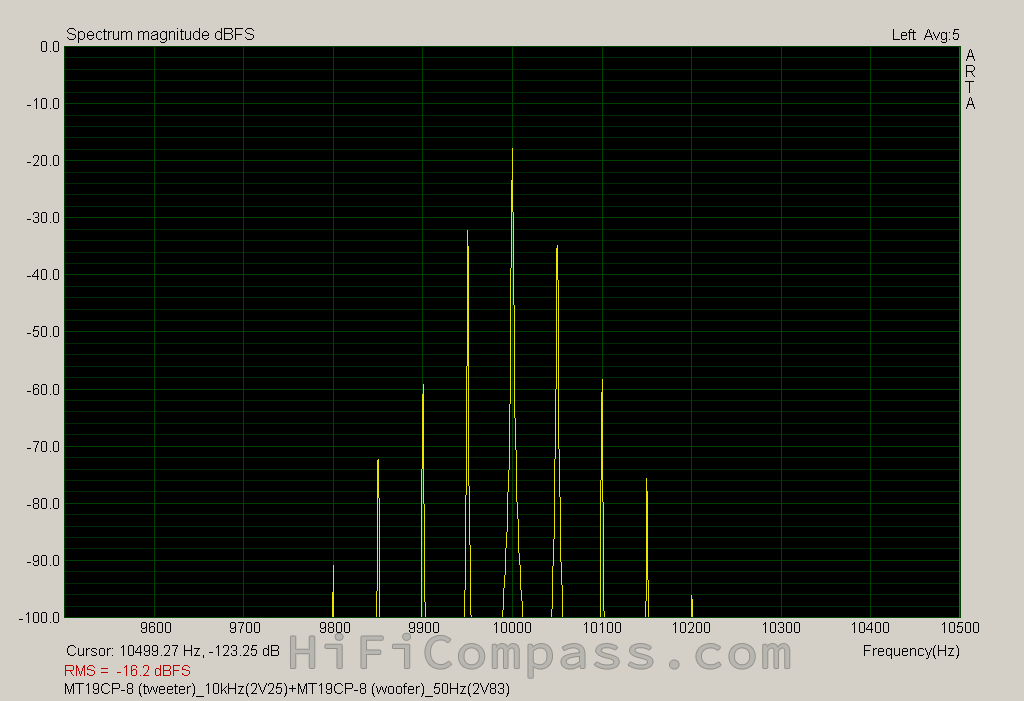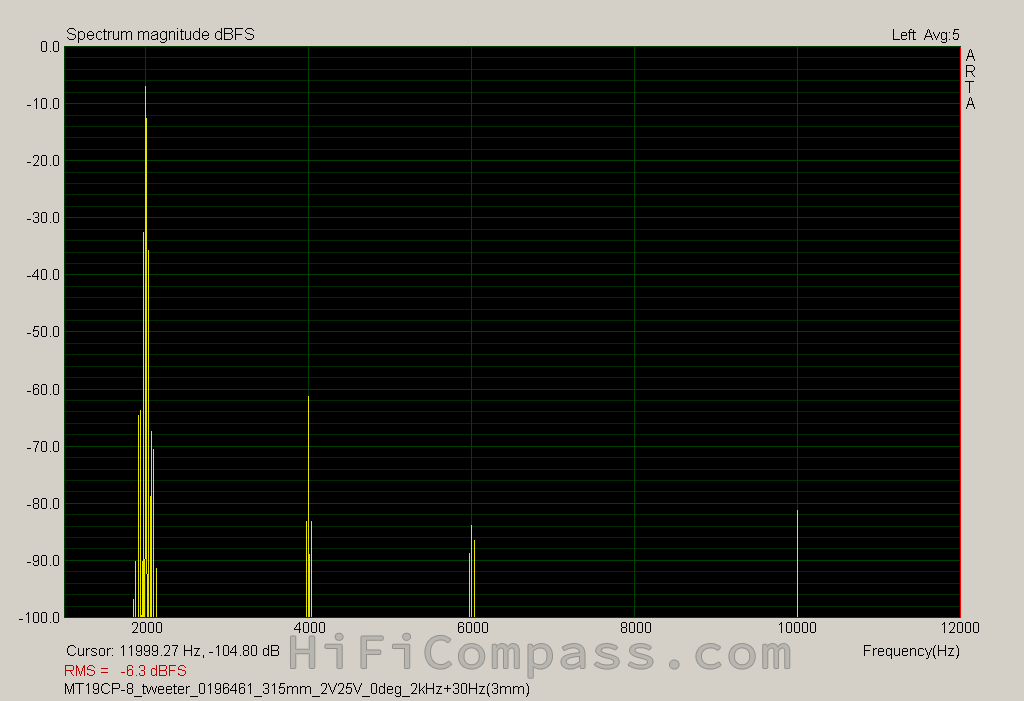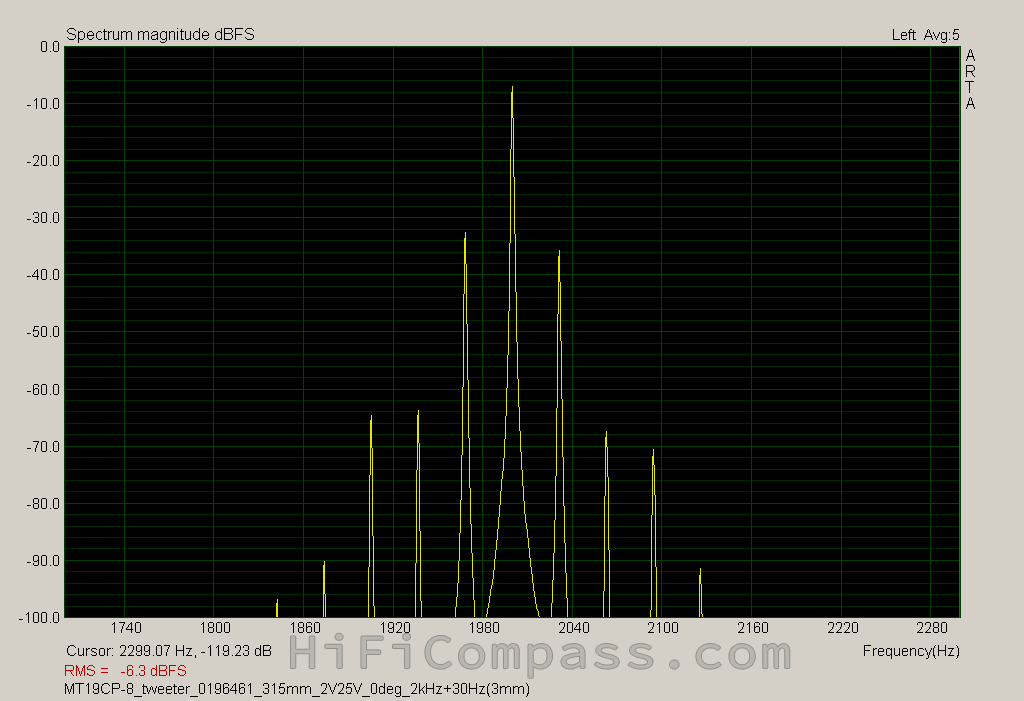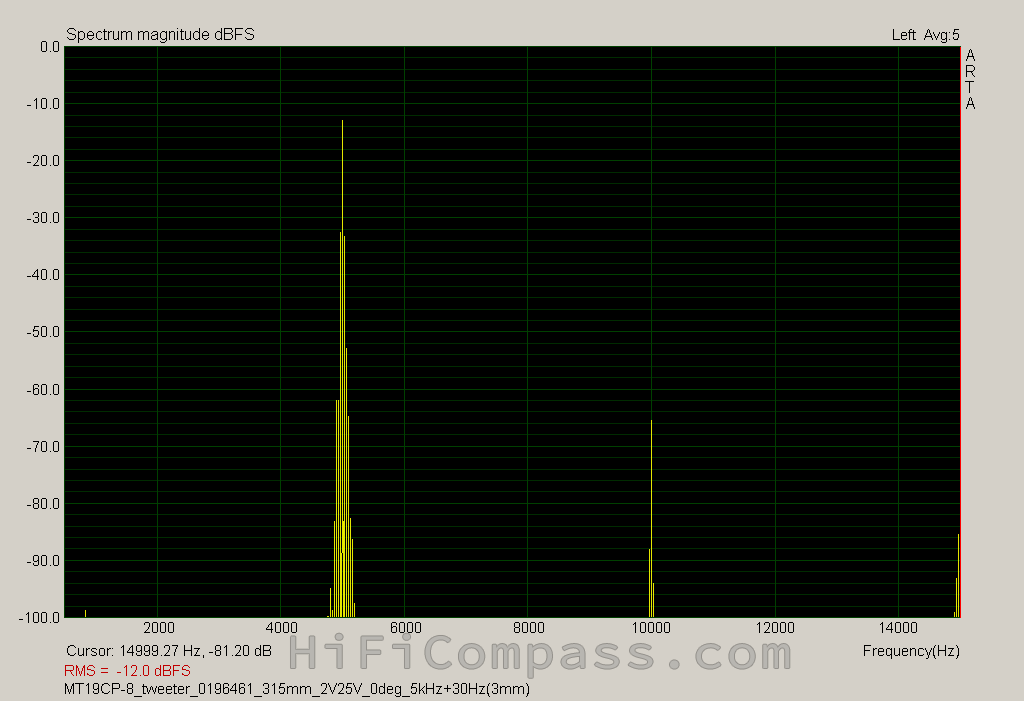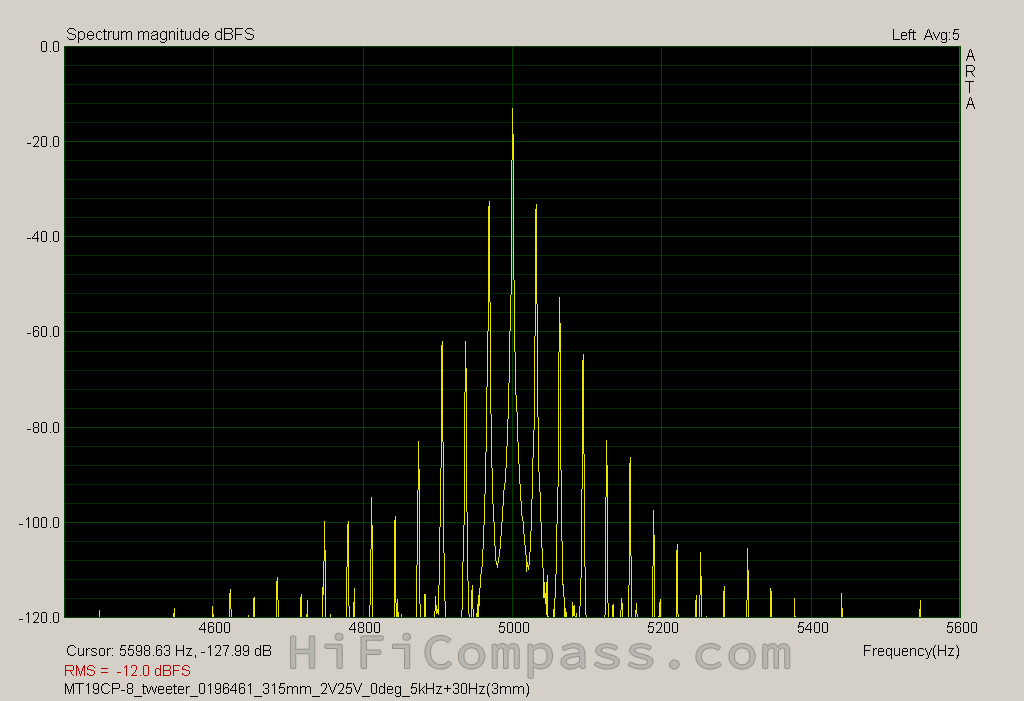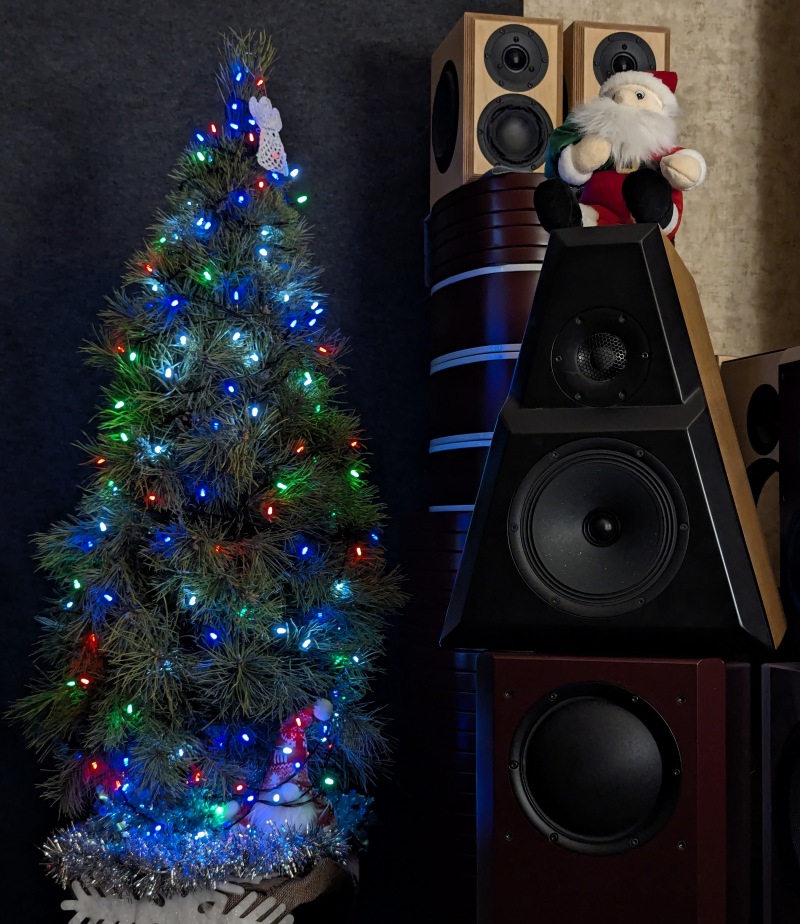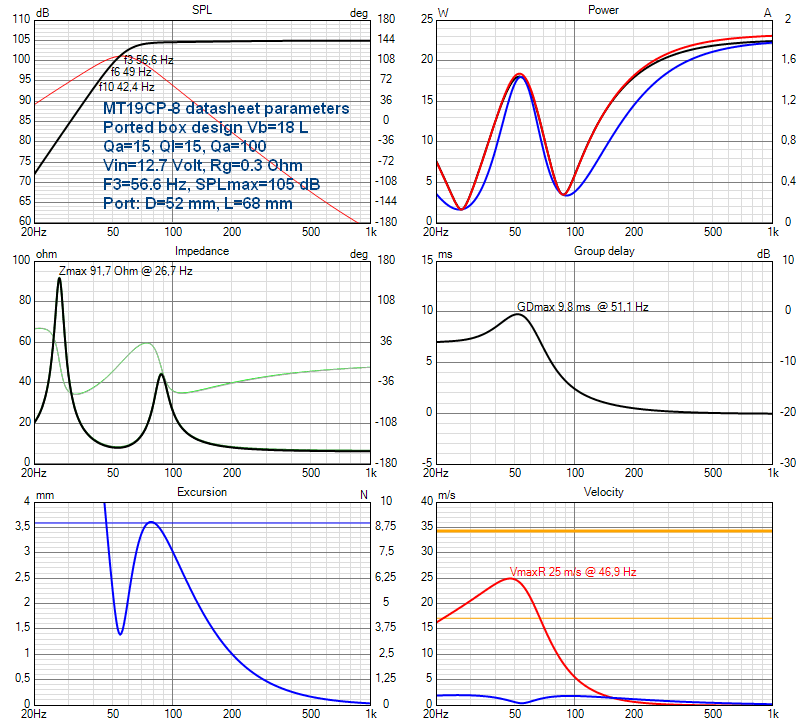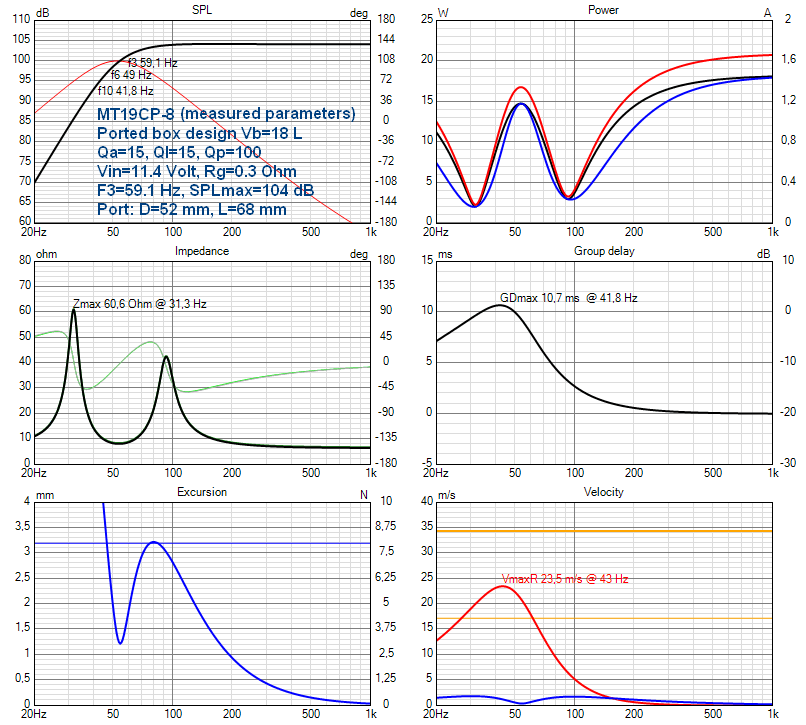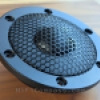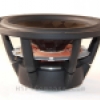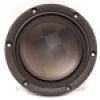HiFiCompass
Satori MT19CP-8 7.5" coaxial speaker review
In the summer of 2023, Indonesian speaker manufacturing giant Sinar Baja Electric has added a very interesting new model to its SB Acoustics brand portfolio - the Satori MT19CP-8. This is the first coaxial speaker in the flagship Satori line, up to this point SB Acoustics has already had several coaxial designs, but only in the budget line. The designers decided to equip their first-born MT19CP-8 with a cone made of paper reinforced with Egyptian papyrus fibers, which produces low and mid frequencies, and a fabric dome 1” tweeter. In accordance with its status, the speaker has a number of design features that can also be found in other models in the Satori line. The company defined the new coaxial in the 7.5" size range and there is a logical explanation for this, since 7.5" is literally equal to 190 mm, which almost coincides with the outer diameter of the speaker basket (187 mm).
Taking the MT19CP-8 in hand, credit must be given to the British company KEF, which, back in 1988, produced its first coaxial driver using its patented Uni-Q technology, destined to become the ancestor of the vast majority of modern coaxial designs with coincident tweeter and midwoofer acoustic centers. Such a design became possible then due to the appearance of powerful miniature rare-earth NdFeB magnets, which allowed the tweeter to be miniaturized and placed at the top of the midwoofer cone. Since then, this design has deservedly gained huge popularity in the world of audio and is available in the arsenal of many manufacturers. Now it is time for SB Acoustics to implement it in a top-of-the-line version.
So why are coaxial speakers so beloved? There are three reasons:
- Due to the fact that the acoustic centers of the radiators of adjacent bands are as close to each other as possible, parasitic interference between them is reduced and time coherence is increased, which brings coaxial closer to a point sound source
- The midwoofer's conical diaphragm is also a horn for the tweeter, which contributes to good directional pattern matching between the midwoofer and the tweeter in the overlaping frequency range, while the axisymmetric design provides more uniform and symmetrical sound radiation. This improves the localization and focusing of sound images and expands the listening comfort zone
- More compact design compared to traditional designs with spaced speakers
Unfortunately, nothing is perfect in the world and coaxials have their flaws too:
- Fundamentally unavoidable parasitic modulation of tweeter radiation by the oscillating diaphragm of the midwoofer, which is also a horn for the tweeter
- In coaxial speakers with a cone-type midwoofer diaphragm, the tweeter's radiation pattern is limited by the cone opening angle. This is more of a specific feature that can be a disadvantage or an advantage, depending on the application and task at hand
Designing the “right” coaxial is a very challenging process, because two drivers have to be designed separately at the same time, with very close acoustic coupling. Optimizing this interaction often imposes contradictory requirements on the design of each driver, which in turn forces designers to make a number of compromises that affect the final design result and product quality. Well, let's see how the Danish engineers from Danesian Audio, who, as we already know from previous reviews (SB21SDCN-C000-4, SB21RDCN-C000-4, Satori MD60N-6, Satori MW16TX-4, Satori TW29BNWG-4, Satori TW29TXN-4, Satori MW19TX-4) are behind all the developments of the SB Acoustics brand, coped with this difficult task.
I would like to thank Mark Thomsen (Marketing and International Sales Manager at Sinard Baja Electric) and Frank Nielsen (CEO & Owner at Danesian Audio ApS) for kindly providing me with samples of Satori MT19CP-8 speakers for testing and helping me solve logistical problems.
Here you can learn about the history of the SB Acoustics and Satori brands, as well as one of the world's largest speaker drivers manufacturer - Sinar Baja Electric (www.sinarbajaelectric.com).
SB Acoustics standart datasheet. It is quite laconic, but at the same time contains all the information a loudspeaker designer needs.
We see that the motors of both drivers use neodymium magnets and copper sleeves (or pole caps), the midwoofer voice coil former is made of non-conductive fiberglass, the voice coils are made of copper-plated aluminum wire, the midwoofer cone is made of paper with Egyptian papyrus added, and the tweeter diaphragm is made of cloth - in general, the listed set of characteristic features corresponds to a high quality driver.
I can't point out any outstanding technical parameters, but the midwoofer and tweeter are well balanced with each other in sensitivity and power. The linear stroke of the midwoofer is only 3.6 mm per side, so you definitely shouldn't expect deep and thunderous bass from this coaxial.
It's worth noting:
- Low inductance of the midwoofer's 8-Ohm voice coil - only 0.12 mH
- High mechanical quality factor and low mechanical losses of the midwoofer - Qm=6.54, Rms=0.5 kg/s
- The low mass of its moving system, only 12.1 grams, which for a cone area of 152 cm2 is very good. For comparison, here are the mass/area ratios for some “true” midrange drivers (the red color indicates worse ratio):
Scan-Speak 18M/4631G00 - 14.3 grams/154 cm2
Morel TSCM634 - 15.3 grams/119 cm2
Purifi PTT6.5M08-NFA-01A - 17 grams/132.7 cm2
Satori MR16P-8 - 10.6 grams/119 cm2
BlieSMa M142T-6 - 10.9 grams/180.3 cm2
Accuton C173-6-090 - 14 grams/133 cm2
Accuton C168-6-990 - 16.1 grams/133 cm2
Lavoce MAN062.00-8 - 14.4 grams/129 cm2
The midwoofer section is very light, even lighter than their “true” Satori MR16P-8 midrange, which gives the MT19CP-8 every chance to be a full-fledged large midrange, if the frequency response and distortion allow. Let's see![]() .
.
SB Acoustics' standard, sturdy packaging made of durable, glossy corrugated cardboard. Inside, the speaker is secured by cardboard inserts with shaped cut-outs. The front of the speaker is additionally covered with a flap of soft cloth to prevent excessive friction between the basket and the rough cardboard.
MT19CP-8 is assembled on the same chassis as the Satori MW19TX-4 model, only the dust cap is replaced by a miniature tweeter, and the pole piece vent hole is used for wires and tweeter armature. Everything is logical here, since there is no dust cap underdome space, it doesn't need ventilation.
The quality of workmanship is exemplary, there is nothing to fault. Perfectly fitted parts, completely free of any cosmetic defects, no burrs, warps, chips or glue marks. The label is glued on perfectly.
The acoustically transparent basket is made of aluminum alloy and powder coated. The basket flange is 8 mm thick, the spokes are thick and very strong. They didn't skimp on the material much. It happens that the baskets of some speakers ring like a tuning fork when tapping them with a finger, which can't be said about MT19CP-8 - the basket is dead. The magnet system is covered with a rubber ring with shaped elements that visually continue the spokes of the basket. It does not carry any serious functionality, but nicely completes the design of the basket. A foam rubber gasket is glued to the back side of the basket flange.
All the motor parts are made not by simple casting or stamping, but by precise machining, as evidenced by the traces of the cutter on their outer surfaces. This is one of the conditions for narrowing manufacturing tolerances and improving the consistancy of parameters, as well as an attribute of the highest class speakers. The ring neodymium magnet is not visible as it is covered with the decorative rubber ring.
The midwoofer cone is made of black pressed paper with many visible light colored flecks, which are just the very additives of Egyptian papyrus (isn't that what it is?![]() ), allowing the manufacturer to adjust the degree of stiffness and internal damping. The profile of the cone is a complex curvilinear shape, and since here it also acts as a horn for the tweeter, the requirements for the profile are different from those of the MW19P-4 paper cone woofer. A 26mm fabric tweeter with a narrow half-roll fabric surround is mounted on the pole piece of the midwoofer's motor. A plastic ring around the tweeter surround ensures a smooth mating with the midwoofer cone profile.
), allowing the manufacturer to adjust the degree of stiffness and internal damping. The profile of the cone is a complex curvilinear shape, and since here it also acts as a horn for the tweeter, the requirements for the profile are different from those of the MW19P-4 paper cone woofer. A 26mm fabric tweeter with a narrow half-roll fabric surround is mounted on the pole piece of the midwoofer's motor. A plastic ring around the tweeter surround ensures a smooth mating with the midwoofer cone profile.
To reduce parasitic diffraction in the MT19CP-8, instead of the classic half-roll surround, SB Acoustics used for the first time a low-profile double-roll surround made of very soft, low-loss rubber, which naturally follows the cone's profile, creating a minimum of obstacles in the sound wave path of the tweeter.
A flat 4-wave fabric spider is mounted on an aluminum ring spaced away from the magnet system. The weave density is not very dense, so the spider is very soft.
The voice coil former of the midwoofer has no ventilation holes, as in this design it is ventilated through the air gap between the voice coil former and the tweeter.
The flexible silver lead wires are themselves quite stiff and are attached to the voice coil former symmetrically at an angle of 180 degrees. This helps better balancing of the moving system.
The gold-plated midwoofer terminals are pressed into the holes in the basket and sit there very firmly. The large amount of space around them makes them very comfortable and easy to connect. The gold-plated tweeter terminals are mounted on a pressed-paper pad screwed to a plastic disk at the back of the magnet system. A bit flimsy, but they do the job.
Visual inspection tells us that what we have before us is a well thought-out and superbly realized design for a modern coaxial speaker.
Prior to all measurements, the MT19CP-8 (midwoofer) was broken-in with a sinusoidal voltage of 10 Volts/45 Hz for 30 minutes. The diagrams below show the frequency responses of the midwoofer impedance modulus after the break-in at different scales:
The measured Thiel/Small parameters differ significantly from the datasheet. The resonant frequency was Fs=53.83 Hz, which is 10.83 Hz higher than the datasheet value, the total quality factor Qts=0.4016 vs. 0.31 in the datasheet, and the equivalent volume Vas=24.55 liters vs. 37.1 liters in the datasheet. The mass of the moving system Mms=11.56 grams is almost identical to the datasheet (12.1 grams). Analysis of the parameters shows that the reason for this discrepancy is exclusively the increased stiffness of the suspension of the moving system. If we virtually reduce the stiffness to such an extent that Vas increases to 37.1 liters, then the resonance frequency will be lowered to the declared 43 Hz.
The impedance curve from 300 Hz to 11 kHz rises very slowly and linearly (on a logarithmic scale), reflecting the very low inductance of the voice coil (0.12 mH), achieved by the massive copper sleeve in the magnetic gap, which helps to reduce nonlinear distortion. Slight undulations are noticeable throughout this section at high magnification. In the range of 3 -10 kHz they are caused by the cone's transition to the break-up mode of operation. In the range 800 -1200 Hz, most likely, the surround resonance, but in the range 350 - 650 Hz the cause is not easy to determine. It could be resonance of the lead wires, but in my opinion it looks more like circumferential modes of the cone. The level of undulations is quite low, which is not easy to achieve for a very light paper cone and indicates a well-balanced cone.
Now let's look at the tweeter impedance:
The measured value of the resonant frequency Fs=1232 Hz is almost identical to the datasheet (1200 Hz), the difference is within the error of manufacturing tolerances.
The impedance curve above 3 kHz rises very slowly and linearly (on a logarithmic scale), reflecting the low inductance of the voice coil achieved by the copper cap on the pole of the magnet system. There are no parasitic spikes in the impedance curve, indicating a perfectly balanced moving system.
On-axis frequency response (at 315 mm)
Below are the axial unsmoothed SPL frequency responses for two MT19CP-8 samples measured in a test baffle at a distance of 315 mm to the microphone at 2.83 Volts. First for the midwoofers:
The responses of both samples match each other perfectly, even in the break-up mode of cone operation. The shape of the frequency response over the entire range is in good agreement with the datasheet. The measured sensitivity in the frequency range of 170 - 900 Hz was 90 dB, which is in perfect agreement with the datasheet.
In the range up to 3 kHz the frequency response is very smooth, with a flat section up to 850 Hz and a smooth 3 dB hill in the 850 Hz - 3 kHz range.
The engineers did an excellent job of taming the surround parasitic resonance - the 700Hz to 1500Hz band is very smooth, without the usual dip.
Starting at 3 kHz, the cone “breaks” and goes into a well-controlled break-up mode of operation, accompanied by alternating spikes and dips in the response of relatively small height and width. The MT19CP-8's response is very similar to that of its paper woofer colleague, the MW19P-8, except that the coaxial has slightly better break-up behavior.
The responses of both tweeters are close to each other, but differ in magnitude from 0.5 to 3 dB in the range up to 20 kHz. The largest difference of 3 dB is observed at 9 kHz. In general, given that the MT19CP-8 are shipped individually rather than in matched pairs, this variation is acceptable. The frequency response of one sample averages slightly lower than the other, which is easily compensated for in the crossover. The shape of the frequency response and the average sensitivity, which can be estimated at 90 dB, are quite in line with those stated in the data sheet.
The frequency response of the tweeter is typical of a horn-loaded tweeter. We observe a maximum of 98 dB (!) at 1.6 kHz, which is due to the acoustic gain of the horn. As the frequency increases, the frequency response decreases smoothly and reaches a 90 dB shelf between 10 and 20 kHz. At 9 kHz the frequency response has a dip of 6-8 dB.
In the range of 2–20 kHz, we see a small and quite acceptable waviness of the frequency response, which is simply inevitable for a fabric tweeter of a coaxial speaker given the inevitable presence of small inhomogeneities in its immediate acoustic environment.
The dip at 9 kHz is not pleasing to the eye, of course. This is a common problem in a coaxial design and is associated with non-optimal matching of the tweeter diaphragm and the horn throat, which is formed by the midwoofer cone. Between them there are "extra" parasitic elements in the form of a tweeter surround and a slot gap, which affect the operation in this frequency range. By the way, this problem is present not only in the MT19CP-8, but in almost all coaxial designs of many brands, for example, SB Acoustics и SEAS ( Seas C16NX001-X-TPCD, Seas C16NX001/F, Seas C18EN002/A, Seas MR18REX/XF, SEAS T18REX/XFC, Seas L12RE/XFC, Seas C16N001/F, SB Acoustics SB12PACR25-4-COAX, SB Acoustics SB16PFCR25-4 COAX, SB Acoustics SB13PFCR25-4 COAX).
Off-axis frequency responses (at 315 mm)
Below are graphs of off-axis frerquency responses - conventional and normalized, in which the axial response is taken as a reference, and the off-axis ones reflect only the difference with it. First for the midwoofer:
Off-axis frequency responses are in perfect order. No unpleasant surprises were found. In the range up to 3 kHz they monotonously decrease with increasing deviation angle and frequency, but in the range of 5 - 13 kHz 30, 45 and 60-degree curves differ little from each other and are at the same level.
Now let's look at the tweeter:
The frequency response decreases monotonously with increasing frequency and deflection angle. Thanks to the horn, the directivity pattern is well controlled in the 2-10 kHz range and the directivity index is maintained more or less constant.
Already at 15 degrees the dip at 9 kHz is significantly reduced and creeps to 10.5 kHz, and starting from 30 degrees it completely disappears. This circumstance should be skillfully used when desegning and setting-up loudspeakers
The peak at 9 kHz on the normalized graph is confusing because the normalization is performed to the frequency response on the axis, which has a dip at that frequency. Don't let these graphs fool you.![]() .
.
Harmonic distortion (at 315 mm)
Above are the dependences of harmonic distortion at voltages of 2.83 and 16 Volts, which correspond to average sound pressure levels of 90 and 105 dB, respectively. The measurements were taken on axis at a distance of 315 mm to the microphone. To limit overloading of the speaker in terms of diaphragm displacement amplitude, a second-order digital high-pass filter with cutoff frequencies of 50 Hz at 2.83 Volts and 80 Hz at 16 Volts was used when measuring harmonic distortion. In these graphs, we analyze the frequency range only above 150 Hz.
At all sound pressure levels, the entire operating frequency range is dominated by an exceptionally sonorous second harmonic.
The usual increase of all harmonics with decreasing frequency, even at a sound pressure of 105 dB (!) begins at about 200 Hz (!). The behavior of all harmonics over the entire frequency range, even in the break-up mode of the cone, is very stable at any volume. No resonant bursts are observed.
In the 700Hz - 1.5kHz range, where distortion problems due to the "surround/edge of the cone" resonance often arise, everything is very good. This is further confirmation that the Danish engineers have done an excellent job.
Overall, I would rate the overall level of harmonic distortion as "very low".
Above are the harmonic distortion of the tweeter at voltages of 2.83 and 11.2 Volts, which correspond to average sound pressure levels of 90 and 102 dB, respectively, and even 109 dB (!) at 2 kHz. The measurements were taken on axis at a distance of 315 mm to the microphone. To limit overloading of the speaker in terms of diaphragm displacement amplitude, a second-order digital high-pass filter with a cutoff frequencie of 800 Hz. In these graphs, we analyze the frequency range only above 1200 Hz.
At all sound pressure levels, the entire operating frequency range is dominated by an exceptionally sonorous second harmonic. The spike of all harmonics at 9 kHz is most likely due to the dip in the on-axis SPL frequency response at this frequency and, therefore, the apparent increase in the harmonic coefficient, which in the diagrams provided is the ratio of the frequency response of harmonic distortion to the on-axis SPL frequency response. Everything is exactly the same as in the case considered above with the normalized off-axis frequency responses diagram.
The 2nd, 3rd and 4th harmonics increase unusually with frequency. The 2nd starts at 4 kHz, and the 3rd and 4th at 6 kHz. However, since the components themselves fall in the ranges above 8 kHz (2nd harmonic), 18 kHz (3rd harmonic) and 24 kHz (4th harmonic), they are more dangerous to bats than to ordinary people![]() . All this is not as interesting as the behavior in the range of 1.4 - 4 kHz. How did they manage to get such low distortion down to 1.4 kHz from a 1-inch tweeter with a resonant frequency of 1200 Hz? Judge for yourself, at a sound pressure of 109 dB, the level of the 2nd harmonic is -28 dB, and all the others are below -65 dB - isn't that cool?
. All this is not as interesting as the behavior in the range of 1.4 - 4 kHz. How did they manage to get such low distortion down to 1.4 kHz from a 1-inch tweeter with a resonant frequency of 1200 Hz? Judge for yourself, at a sound pressure of 109 dB, the level of the 2nd harmonic is -28 dB, and all the others are below -65 dB - isn't that cool?
Harmonic distortion (at 10 mm)
Due to the specifics of my test setup, to analyze the nonlinear distortion of woofers in the frequency range up to 200 Hz it is more correct to use the results obtained by measurements in the near field at a distance of 5 to 20 mm from the cone. The diagrams below show harmonic distortion at voltages of 2.83 and 5.6 Volts at a distace of 10 mm from the tweeter dome:
The second harmonic dominates in the distortion spectrum, but below 50 - 70 Hz, depending on the voltage, the third one already begins to overtake it. The distortion level is very low, but only above 150 Hz. Below 150 Hz, all harmonics begin to grow rapidly. In general, it is a very decent behavior for a midwoofer with a linear stroke of only 3.6 mm.
Voice coil current harmonic distortion
This type of measurement, despite its simplicity, is a good tool for assessing the linearity of the speaker motor. The diagrams above show the frequency responses of the 2nd, 3rd, 4th and 5th harmonics of the midwoofer and tweeter voice coil current at a voltage of 2.83 V (with the 2nd order high-pass filter with a cutoff frequency of 50 and 800 Hz, respectively).
Voice coil current nonlinearity is the direct nonlinearity of the mechanical force driving the speaker cone, since this force is related to the current by a simple relationship F=B*L*I, where B is the magnetic field strength, L is the length of the voice coil wire inside the magnetic gap and I is the current. The level of current distortion largely determines the minimum level of distortion that can be obtained from a speaker.
There is nothing unusual in the behavior of harmonics. Everything is good, everything is smooth, without unexpected resonant spikes. The usual growth of all components with a decrease in frequency at the bottom of the working range. I would rate the overall level of current harmonics as "very low" for the midwoofer and "low" for the tweeter.
The intermodulation distortion measurement is one of way of to analyze the device non-linearity. It is not an alternative, but an additional method and allows you to identify the spectral components of the inharmonious structure, which are much more harmful for high-quality sound reproduction and to which our hearing is more sensitive.
For testing I chose the frequencies with ratio (1:8.5). In this case the Doppler distortion is not yet dominant and the contribution of amplitude modulation can still be observed. The fractional coefficient eliminates the superposition of harmonic and intermodulation components on each other:
- 30 and 255 Hz
- 125 and 1063 Hz
The intermodulation distortion spectra for these frequency pairs are shown below. However, in these plots products of the motor nonlinearity are mixed with products of inevitable frequency modulation due to the Doppler effect. How to determine who is who? We can analytically estimate the level of the first pair of the side Doppler components using the following formula [http://www.linkwitzlab.com/frontiers.htm#J]:
As(dB) = 20*log10(pi*A1*f2/c), where pi=3.14, A1- the modulating signal amplitude in meters, c=343 m/s, f2 - carrier frequency. In our case f2 =255 Hz or 1063 Hz.
The amplitudes of the modulating frequencies were obtained by measurements (for 30 Hz) and by calculation (for 125 Hz), based on the SPL and the cone area. After that, the estimated maximum level of the 2nd order spectral components (IMA2Doppler) corresponding to Doppler distortions was calculated:
for 30 Hz - A1=4 mm, IMA2Doppler=-40.6 dB
for 125 Hz at 8 Volts - A1=1.1 mm, IMA2Doppler=-39.43 dB
If the measured side spectral components are higher than these values, then the speaker nonlinearity and the amplitude modulation are predominant, if lower, then the Doppler distortion and the frequency modulation caused by them is dominant.
- 30 and 255 Hz
Using the MT19CP-8 as a full-fledged midwoofer in a two-way loudspeakers exposes it to powerful low-frequency signals at 30 Hz, stimulating maximum amplitude of diffuser oscillations and, as a result, maximum modulation of midrange frequencies. This frequency pair perfectly reveals the nonlinearity of the motor at low frequencies
For an oscillation amplitude of 2 mm (30 Hz), the measured IMA2 value was -34.79 dB, which is significantly greater than the Doppler component of -46.6 dB, which means that in the spectrum of intermodulation distortions amplitude modulation prevails over frequency modulation.
For an oscillation amplitude of 4 mm (30 Hz), the measured IMA2 value was -26.02 dB, which is significantly greater than the Doppler component of -40.6 dB, which means that in the spectrum of intermodulation distortions amplitude modulation prevails over frequency modulation. Note that the amplitude of 4 mm is 0.4 mm higher than the declared linear limit for the MT19CP-8, which is 3.6 mm.
In general, I would rate the level of intermodulation distortions at low frequencies as "low", at the level of high-quality midwoofers of its class.
- 125 and 1063 Hz
This frequency pair tests the midwoofer's resistance to intermodulation distortion when used as a midrange driver
For 2 Volts, the measured IMA2 values were -42.2 dB, which significantly exceeds the Doppler threshold of -51.47 dB, which means that in the spectrum of intermodulation distortions, amplitude modulation prevails over frequency modulation.
For 8 Volts, the measured IMA2 values were -30.5 dB, which significantly exceeds the Doppler threshold of -39.43 dB, which means that in the spectrum of intermodulation distortions, amplitude modulation also prevails over frequency modulation.
In general, I would rate the level of intermodulation distortions at medium frequencies as "very low".
The midwoofer's step response rises very quickly and returns to rest aperiodically, but is far from ideal. The front has too high an overshoot, the falling part it is spoiled by oscillatory processes from cone resonances in the break-up mode.
The tweeter's step response rises very quickly, but returns to rest with strong oscillations. The reason for this is the high total quality factor (Qts=1.375) at the main resonant frequency.
After filtering in the crossover, both responses promise to look beautiful![]() .
.
A waterfall shows the same effects as the step or freequency responses, in addition to exposing hidden resonances that are difficult to see on other types of measurements.
No new resonances were detected. The midwoofer has a very clear waterfall up to 3.5 kHz and a series of fairly quickly fading resonant "tails" after going the cone to the break-up mode. After 2.8 ms, the waterfall is completely calm.
The tweeter's waterfall has a long tail at the main resonant frequency, which is a reflection of its high quality factor. A small "forest" in the range of 3 - 6 kHz is most likely due to parasitic interference effects due to reflections from the midwoofer cone. Otherwise, everything is more or less normal.
The review would not be objective if, when describing all the advantages of a coaxial speaker, its disadvantages related to the modulation of the tweeter's radiation by the midwoofer cone oscillations were not mentioned. I do not want to cast a shadow on the Satori MT19CP-8, it is not specifically to blame here, but, taking this opportunity, I would like to demonstrate these effects using its example. These modulation effects are fundamentally inevitable for a coaxial design, so they are present in any coaxial speaker, regardless of brand and cost.
First, let's look at how the tweeter's frequency response changes depending on the position of the midwoofer's cone. The diagram below shows the frequency response for three cone positions - "3 mm inside the motor", "3 mm outside the motor" and for the rest state:
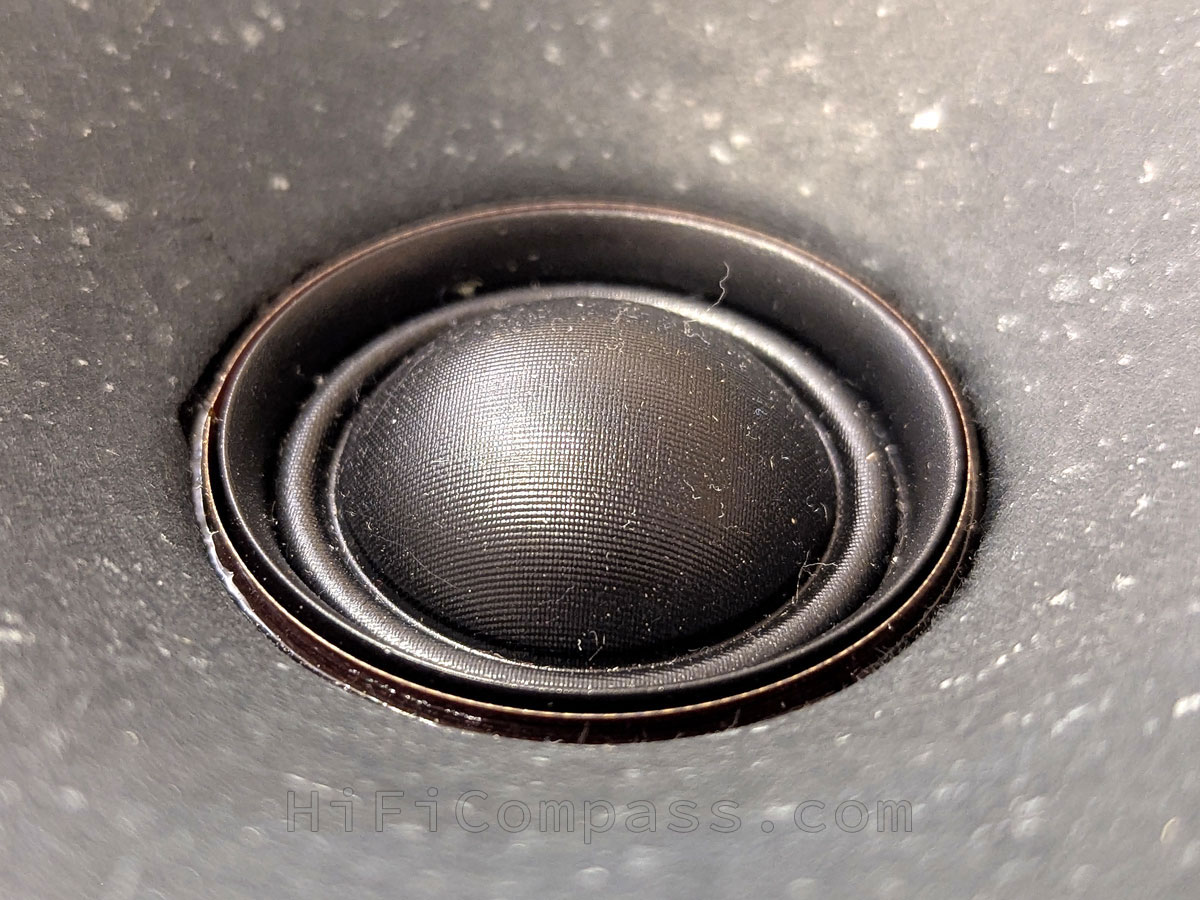 |
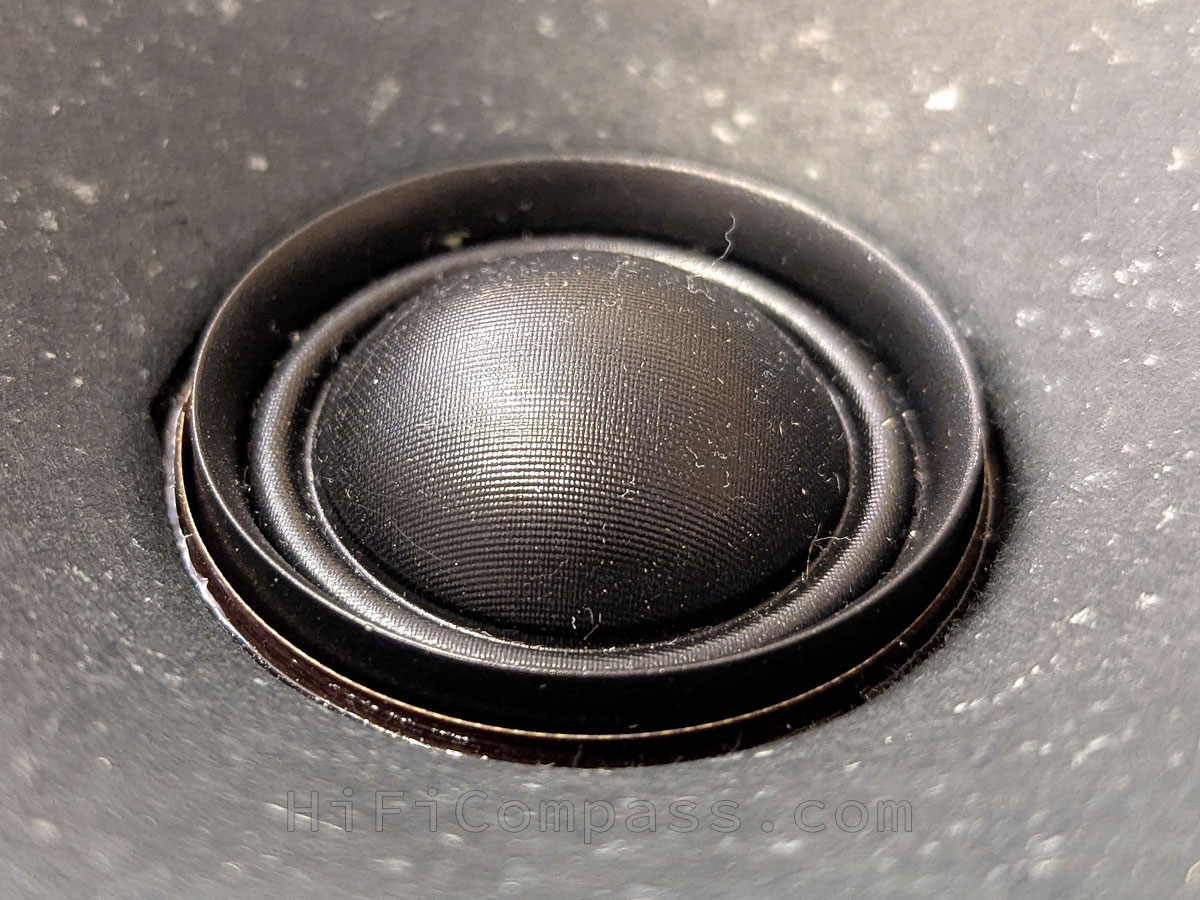 |
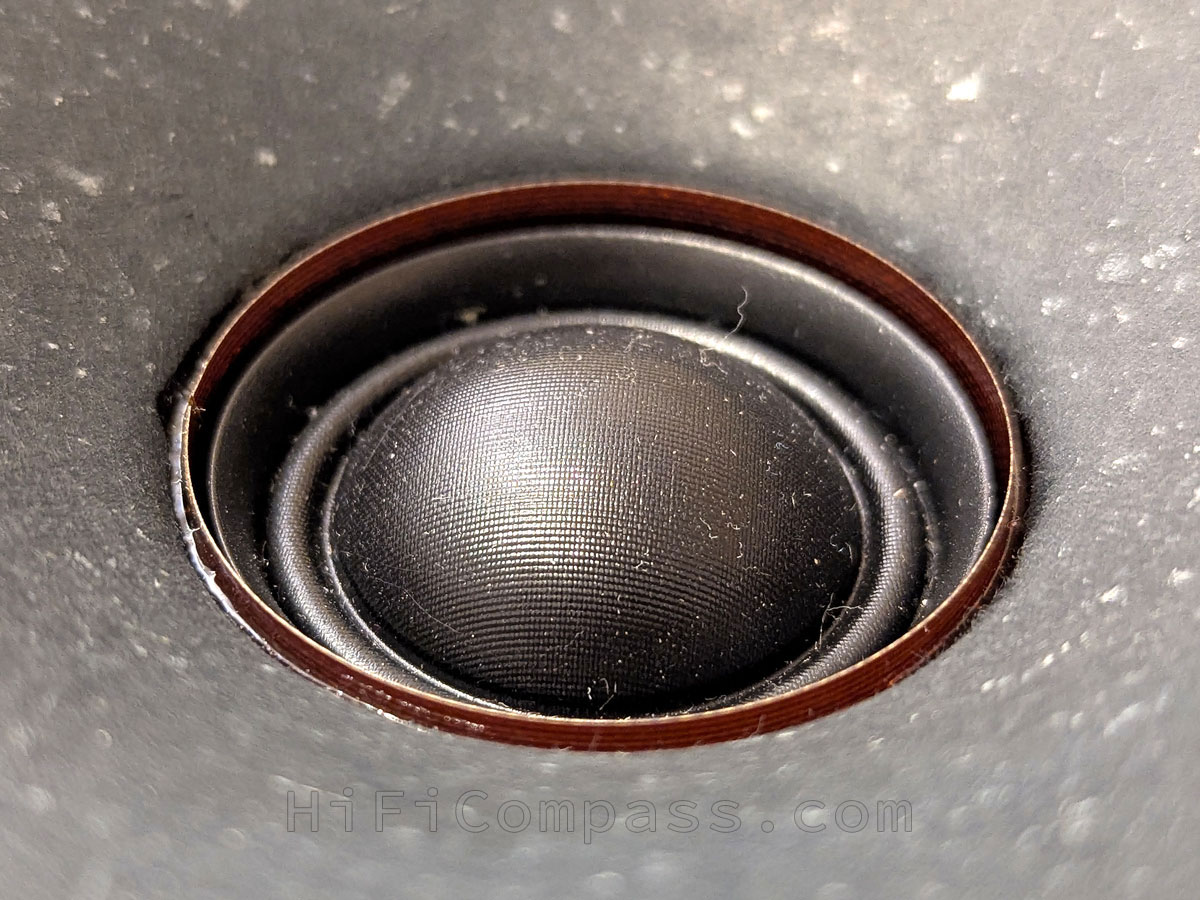 |
As we can see, in the range from 3 to 10 kHz, the deviation of the tweeter's frequency response is from ±2 to ±3 dB.
Next, we will trace how the tweeter's response spectrum will change to a single sinusoidal voltage with a frequency of 2 kHz, 5 kHz and 10 kHz depending on the sinusoidal voltage of 50 Hz, 100 Hz, 200 Hz, 315 Hz or 500 Hz applied to the midwoofer. Here are the individual response spectra of single excitation signals:
Now let's see what happens if these signals are simultaneously fed to the tweeter and midwoofer:
And finally, let's consider the tweeter response spectra to signals with a frequency of 2 or 5 kHz with the midwoofer oscillation amplitude of 3 mm with a frequency of 30 Hz:
As we can see, the parasitic frequency modulation caused by the Doppler effect is quite significant and is stronger the greater the amplitude of the midwoofer cone oscillations and the higher the frequency of the tweeter signal.
Fortunately, this time I didn't have to evaluate the MT19CP-8 sound in a test baffle or just in my hands. For this, I had more or less suitable enclosures from my Pharaoh-Be speakers, which use the MW19P-4 midwoofer with exactly the same basket. The internal volume was reduced to 18 liters, the port was shortened for tuning to 54 Hz, the speakers were installed in the enclosures, all the necessary measurements were made, then modeling and implementation of a two-way crossover using MatriXover-II. In fact, I evaluated the sound of the MT19CP-8 as part of a two-way loudspeakers based on them.
Naturally, there is no deep bass. And where would it come from with a low cutoff frequency of only 59 Hz? But the bass that is there is very good - not bloated, dense, fast, relief and articulated. I think that for small rooms up to 12 square meters, given their acoustic support at low frequencies, such bass may well be enough for most listeners.
The upper bass and midrange are excellent. The timbre is noble, juicy, rich, colorful. The resolution is high, the detailing of strings, brass instruments and piano is excellent. Male and female vocals are full and velvety. The veil and shouting in the upper midrange, typical of paper cones, are minimal. Thanks to the tightly pressed paper with the addition of reinforcing papyrus fibers, the MT19CP-8 produces a very lively and dynamic sound.
The highs are not far behind the low and mid frequencies in terms of quality. The extension to the upper limit of the audible range is excellent, there is no lack of air or loss of detail. Yes, the tweeter's sound is not as "fat", low, deep and physical, as all Satori TW29 (XX) tweeters, but it does not seem so sluggish too, but on the contrary, more nimble. The percussion is worked out very good. The dip in the axial frequency response at 9 kHz... Really? And I already forgot that it is there. The high frequencies are rich, transparent and expressive. One of my friends (an ordinary music lover, not an audiophile, in no way connected with critical listening and description of the sound characteristics of audio systems), who had the opportunity to listen to these loudspeakers, while visiting me, enriched my vocabulary with a new epithet characterizing high frequencies - wet. Understand it as you want, but there is something in it![]() .
.
The soundstage and timbre are very stable when moving left/right, up/down from the listening position. Sound images seem to be located far behind the loudspeakers, their physicality is not very pronounced, but localization and focus are excellent. Subjectively, intermodulation distortion due to the Doppler effect is not felt at all clearly, there is no discomfort, perhaps it is woven into the sound signature of the speakers, but in any case, on paper it looks worse than in reality.
Overall, I liked the MT19CP-8 for its rich timbre, overall transparency and expressiveness of sound. I really hope that a similar project of two-way loudspeakers, but in a more perfect form, will definitely appear in my portfolio.![]() .
.
Based on the measurements, the MT19CP-8 can be recommended as:
- a single coaxial driver for a high-quality two-way loudspeaker
- the heart of the midrange/tweeter module of a three-way loudspeaker
- a full-fledged midrange driver of a three-way loudspeaker with a separate tweeter if you really like the sound signature of the MT19CP-8 midwoofer
The crossover frequency between the midwoofer and the tweeter can be selected in the range from 1.5 to 3 kHz.
When using the MT19CP-8 in the entire low frequency range, the most optimal design will be a bass reflex type of enclosure. Below are two simulations of a loudspeaker enclosure for the Thiele/Small parameters taken from the data sheet and for the actually measured parameters. You will be able to see that, despite the significant difference in the measured parameters, caused mainly by the difference in the compliance of the moving system from the data sheet, the behavior of the driver in the enclosure is not fundamentally different.
For Thiel/Small parameters from the datasheet:
For measured Thiel/Small parameters:
What is the price and where to purchase it?
The retail price of MT19CP-8 is on average €250/piece excluding VAT. You can buy it in the following online stores:
We got acquainted with the first coaxial speaker MT19CP-8 of the top Satori line of the Indonesian company Sinar Baja Electric. The speakers made a very pleasant impression with its sound and technical characteristics. The engineers from Danesian Audio managed to tame the resonance of the surround, typical for midwoofers of this caliber, achieve very low distortion of the tweeter on the left end of its frequency range and good integration between the tweeter and the midwoofer cone. Based on just one pair of such coaxial, you can get a good-sounding, high-quality and compact loudspeakers that can satisfy the requirements of a very demanding music lover.
I was a little disappointed by the difference between the measured Thiele/Small parameters and the datasheet, although it did not have a significant impact on the speaker's performance in real-world conditions.
What I liked:
-
Good sensitivity - 90 dB/2.83 Volts*1 meter
-
Low harmonic distortion of the midwoofer in the entire frequency range
-
Low harmonic distortion of the tweeter at the bottom of the range
-
Very low intermodulation distortion of the midwoofer in the midrange
-
Low mechanical losses in the moving system of the midwoofer
-
Smooth frequency response of the midwoofer up to 3 kHz
-
Good control of the the tweeter directivity
-
Excellent build quality
What I don't liked:
- Difference between measured T/S parameters and datasheet
- I would like to have deeper bass
- Tweeter axial frequency response dip at 9 kHz
More detailed measurement results can be found here:
MT19CP-8 (woofer part)
MT19CP-8 (tweeter part)
Yevgeniy Kozhushko/06.01.2025
CONTACTS
- Ukraine
- (+380) 95 904 7827
- hificompass@gmail.com
LAST NEWS
-
27 Mar 2025
-
04 Mar 2025
-
25 Feb 2025
-
10 Feb 2025
